 |
| In the Adventures of Buck Danny placed during the 50s a large quantity of military aircraft starting from Korean war are shown . Mostly of these are US Naval Aviation aircraft even if some US Air force aircraft are also present. |
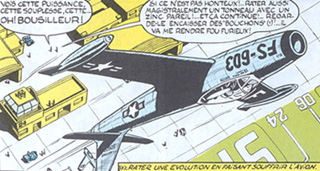
| The Republic F-84 Thunderjet (probably an F-84D) is well depicted in the story story PILOTES D'ESSAI. |
Some Republic F-84 Thunderjet (probably F-84G) are also involved in the two stories taking place during the Korean war: CIEL DE COREE and AVIONS SANS PILOTES. |
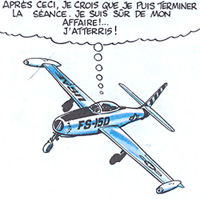 |
Some A Republic F-84 Thunderjet is also represented during the Korean war on the second story of the new "Spin-off" Buck Danny classical adventure titled DUEL SUR MIG ALLEY
|
| 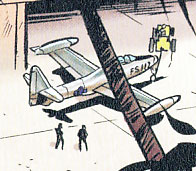 |
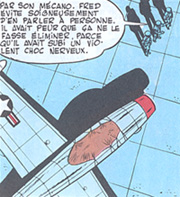
| 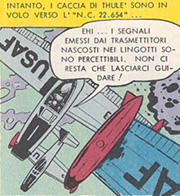
| Other representations of F-84s are from the stories UN AVION N'EST PAS RENTRE and NC 22654 NE REPOND PLUS. |
Some Republic F-84 Thunderjet involved in the Korean war missions are also shown in the story ESCADRILLE ZZ.
|
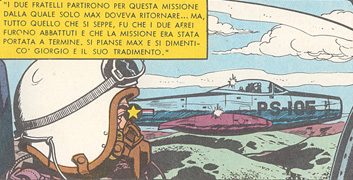 |
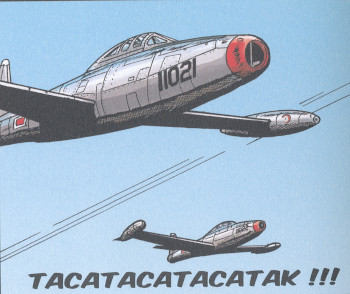 |
Some Some Republic F-84D Thunderjet of the Turkish Air Force are also shown in the story MOLOTOK-41 NE REPOND PLUS.
|
The Republic F-84 Thunderjet was an American-built turbojet fighter-bomber aircraft. The Thunderjet was plagued by so many structural and engine problems that a 1948 Air Force review declared it unable to execute any aspect of its intended mission and considered cancelling the program. The aircraft was not considered fully operational until the 1949 F-84D model and the design matured only with the definitive F-84G introduced in 1951. The Thunderjet became the Air Force's primary strike aircraft during the Korean War, flying 86,408 missions and destroying 60% of all ground targets in the war as well as eight Soviet-built MiG fighters.
| 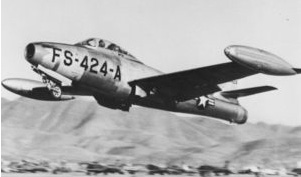 |
|
North American F-86 Sabre |
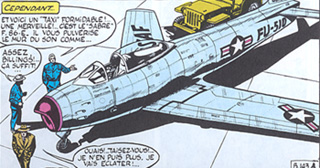 |
A North American F-86 Sabre (probably and F-86A) is well depicted in the story PILOTES D'ESSAI.
|
The F-86 Sabre was one of the most popular fighters during the Korean war. Some of these aircraft are properly shown in the story CIEL DE COREE |
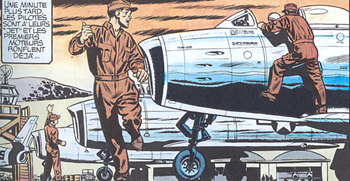 |
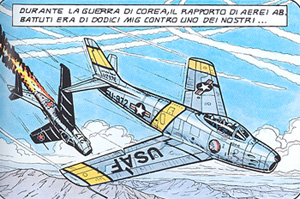 |
An F-86 Sabre and a Mig 15 involved in a dog fight during the Korean war are also depicted inthe story LES AGRESSEURS
|
The F-86A and F-86E Sabre are well represented in the first story of the new "Classic" adventures of Buck Danny titled SABRE SUR LA COREE and DUEL SUR MIG ALLEY by Jean-Michel Arroyo and Frederic Zumbiehl |
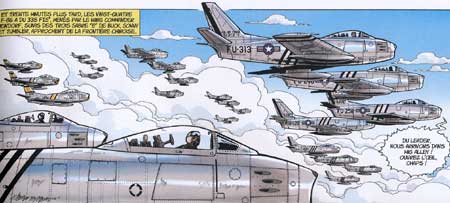 |
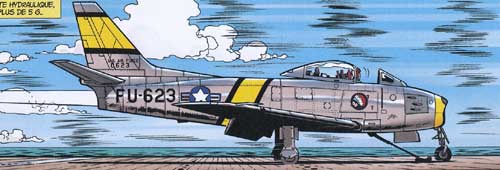 |
An F-86E Sabre is also shown in the same story during some carrier suitability test.
In the reality the F-86E Sabre never conducted a carrier suitability test being its "naval variant" the FJ-2 Fury specifically developed for carrier operation.
|
Some F-86 are represented in the Buck Danny classic #9 LE VOL DU RAPIER |
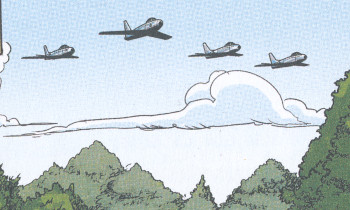 |
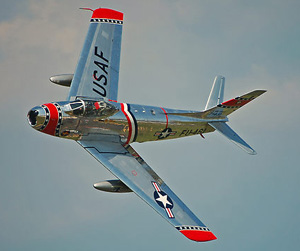 |
The North American F-86 Sabre (sometimes called the Sabrejet) was an American transonic jet fighter aircraft. The Sabre is best known for its Korean War role where it was pitted against the Soviet MiG-15 and obtained UN air superiority. The F-86 was produced as both a fighter-interceptor and fighter-bomber. Several variants were introduced over its production life, with improvements and different armament implemented. It was armed with; Guns: 6 × 0.50 in (12.7 mm) machine guns (1,602 rounds)
Various bombs (2 x 1,000 lb, 450 kg bombs, standard load) e.g napalm canisters, air-to-ground rockets. Four pylons presents, but only two dedicated to ordnances, while the other two were for auxiliary tanks, total load up to 2,400 kg (900 kg bombs and 1,500 l fuel), included a nuclear tactical weapon.
|
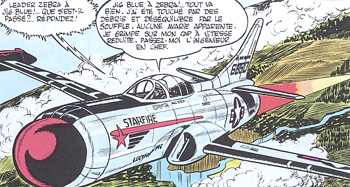 |
In the story PILOTES D'ESSAI Jerry Tumbler is flying on a Lockheed F-94C Starfire. After a failure of the aerial rocket Tumbler was forced to eject from his fighter suffering major injuries on the legs. |
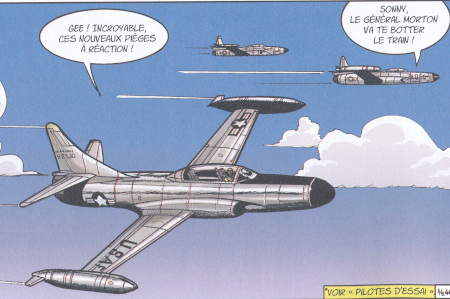 |
Some Lockheed F-94C Starfire from the same AFB Springfield are shown at the end of the "classic" adventure ATOMIC CITY. |
The Lockheed F-94 was the United States Air Force's first operational jet-powered all-weather interceptor aircraft. It was a development of the two seater T-33 Shooting Star trainer aircraft. Built to a 1948 USAF specification for a radar equipped interceptor to replace the aging Northrop F-61 Black Widow and North American F-82 Twin Mustang, it was specifically designed to counter the threat of the USSR's new Tupolev Tu-4 bombers. It was armed with; Guns: 4× .50 in (12.7 mm) Browning M2 machine guns Rockets: 24× or 48× 2.75 in (70 mm) fin-folding aerial rockets.
|
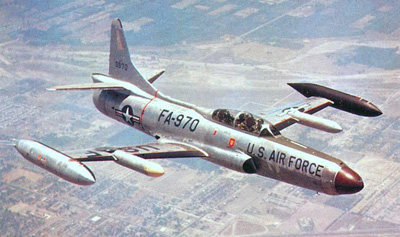 |
|
North American F86D Sabre dog |
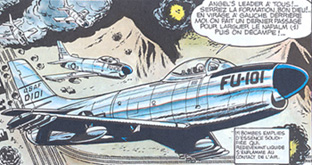 |
In the stories CIEL DE COREE and AVIONS SANS PILOTES Buck Danny and his group tested in combat for the firts time the new and still secret Interceptor fighter F-86D Sabre dog. In the reality the F-86D was never used in combat during the Korean war. In fact this interceptor entered in operative service just after the end of the Korean war. |
The F-86D Sabre dog was A Production interceptor originally designated F-95A. The F-86D had only 25 percent commonality with other Sabre variants, marked by a larger fuselage to house a radome and larger afterburning engine. It had, for the first time for a Sabre, a full control system with an AN/APG-36,15 in. antenna and a J47-GE-17 with A/B. Armament was 24 FFAR 2.75-inch (70 mm) "Mighty Mouse" with 7.55-pound explosive warhead, 2,500 ft/s (760 m/s) at burnout, a range of 4,500 yards (4,100 m).
|
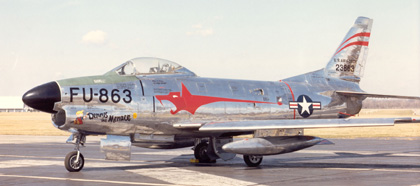 |
|
Mikoyan-Gourevitch MIG-15 "Fagot" |
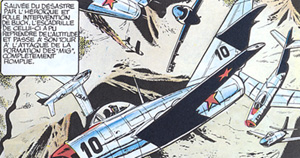 |
The MIG-15 (NATO designation "Fagot") was the most popular enemy fighter during the Korean war. some of these jets appeared in the story CIEL DE COREE.
|
A Korean war scene with a MIG-15 is also depicted in the story ESCADRILLE ZZ
|
 |
 |
A Mig 15 shooten down by an F-86 Sabre during a dog fight in the Korean war are also depicted inthe story LES AGRESSEURS
|
The two-seat dual control jet trained version of the MIG-15 is also shown in the story AVIONS SANS PILOTES. This variant is designated MIG-15UTI |
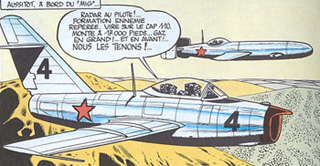 |
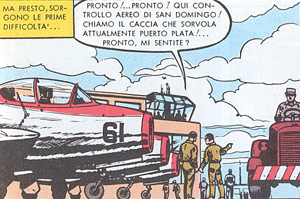 |
Some Mikoyan-Gurevich MiG-15UTI located in a Military Airfield of Santo Domingo are also shown in the story ALERTE A CAP KENNEDY
|
The MIG 15 is also represented in the first story of the new "Classic" adventures of Buck Danny titled SABRE SUR LA COREE and DUEL SUR MIG ALLEY |
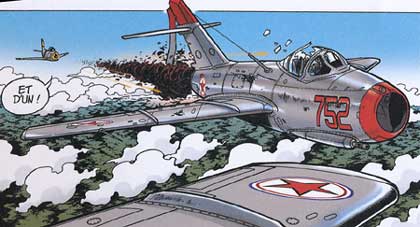 |
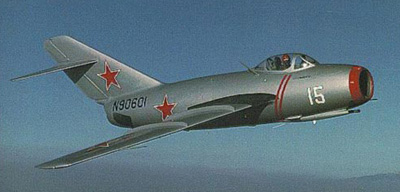 |
The Mikoyan-Gurevich MiG-15 (NATO reporting name Fagot) was a jet fighter developed for the USSR by Artem Mikoyan and Mikhail Gurevich. The MiG-15 was one of the first successful swept-wing jet fighters, and it achieved fame in the skies over Korea, where early in the war, it outclassed all enemy fighters. The MiG-15 also served as the starting point for development of the more advanced MiG-17 which would oppose American fighters over Vietnam in the 1960s.It as armed with 1 or 2x 20, 23x115mm, 25 mm cannons, and 1x 37 or 40 mm cannon (All bullets were armor piercing and highly explosive)
2x 100 kg (220 lb) bombs, drop tanks, or unguided rockets on underwing hardpoints.
|
|
North American B-45 Tornado |
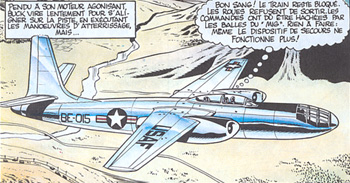 |
The four engines bomber B-45 Tornado is used by Buck Danny, Jerry Tumbler and Sonny Tuckson for the mission against the North Korean remote controlled flying bomb "Ivan" in the story AVIONS SANS PILOTES. |
The North American B-45 Tornado was the United States Air Force's first operational jet bomber, and the first jet aircraft to be refuelled in the air. The B-45 was an important part of the United States's nuclear deterrent for several years in the early 1950s, but was rapidly succeeded by the Boeing B-47 Stratojet. B-45s and RB-45s served in the United States Air Force's Tactical Air Command from 1950 until 1959.
|
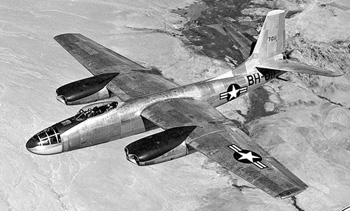 |
|
Republic F-84F Thunderstreak / RF84F Thunderflash |
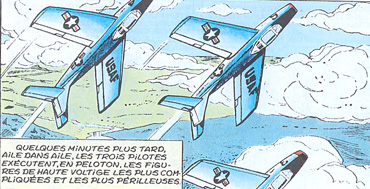 |
Some Republic F-84F Thunderstreak are depicted in the story DUEL DANS LE CIEL. This very short adventure is included in the comic book TOUT BUCK BANNY n°4 |
Buck Danny and his friends are also flying with some Republic F-84F Thunderstreak in the other short story MISSION SPECIALE. This adventure is also part of the comic book TOUT BUCK BANNY n°4
|
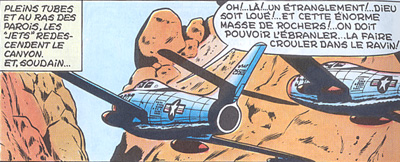 |
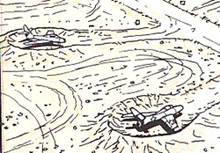 |
Some old F-84F Thunderstreak to simulate the Russian MIGs are located in the Air Force range near Nellis AFB as shown in the story LES AGRESSEURS.
|
The photo reconnaissance version of the F-84F Thunderstreak designated RF-84F Thunderflash is well depicted in the story BUCK DANNY CONTRE LADY X.
|
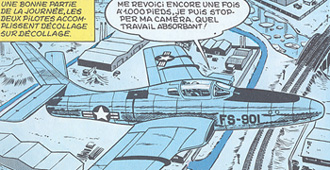 |
 |
The Republic F-84F Thunderstreak was an American-built swept-wing turbojet fighter-bomber. While an evolutionary development of the straight-wing F-84 Thunderjet, the F-84F was a new design.It was ordered into production in July 1950 and was retired from active duty in 1957, only to be reactivated in 1961, and finally retired from the ANG in 1972.
It was armed with 6× .50 in (12.7 mm) Browning M3 machine guns, Up to 6,000lb (2,727 kg) of rockets and bombs, including one Mark 7 nuclear bomb
|
The RF-84F Thunderflash was a photo reconnaissance version of the F-84F Thunderstreak. The RF-84F would also be able to fly night missions by using magnesium flares carried under its wings in flash-ejector cartridges.
|
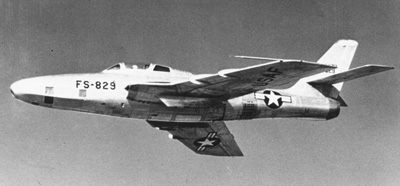 |
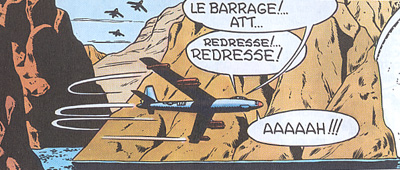 |
The jet bomber Boeing B-47 Stratojet is shown in the story MISSION SPECIALE. This adventure is part of the comic book TOUT BUCK BANNY n°4 |
The Boeing B-47 Stratojet jet bomber was a medium-range and -size bomber capable of flying at high subsonic speeds and primarily designed for penetrating the Soviet Union. A major innovation in post-World War II combat jet design, it helped lead to the development of modern jet airliners. While the B-47 never saw major combat use, it remained a mainstay of the U.S. Air Force's Strategic Air Command (SAC) during the 1950s and early 1960s. It was armed with; Guns: 2× 20 mm M24A1 cannons Bombs: 25,000 lb (11,000 kg) of ordnance, including:
2× nuclear bombs, or 28× 500 lb (230 kg) conventional bombs.
|
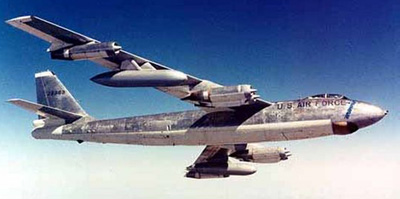 |
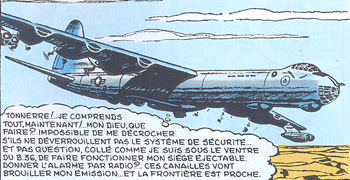 |
A Convair B-36 in the fantasy variant of mother aircraft for an experimental aircraft is shown in the story ON A VOLE UN PROTOTYPE. This short adventure is part of the comic book TOUT BUCK DANNY n°4.
In the reality a version of the RB-36F designed GRB-36F was modified to carry a GRF-84F Thunderstreak on a ventral trapeze as part of the FICON program.
|
The Convair B-36 Peacemaker was a strategic bomber built by Convair and operated solely by the United States Air Force (USAF). The B-36 was the largest mass-produced piston engined aircraft ever made and the biggest wingspan combat aircraft ever built, although there have been larger military transports. The B-36 was the first bomber capable of delivering thermonuclear weapons from within a fully-enclosed bomb-bay. With a range of over 6,000 miles (9,700 km) and a maximum payload of at least 72,000 lb (33,000 kg), the B-36 was the first operational bomber with an intercontinental range, setting the standard for subsequent USAF long range bombers, such as the B-52 Stratofortress, B-1 Lancer, and B-2 Spirit.
|
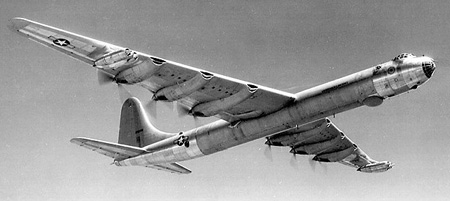 |
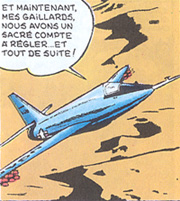 |
In the story ON A VOLE UN PROTOTYPE Buck Danny is flying an experimental prototype armed with rockets and launched from a B-36. This fantasy prototype is indeed similar in design to the research aircraft Bell X-2 Starbuster. The short adventure ON A VOLE UN PROTOTYPE is part of the comic book TOUT BUCK DANNY n°4 |
The Bell X-2 Starbuster was an American research aircraft built to investigate flight characteristics in the Mach 2-3 range. Providing adequate stability and control for aircraft flying at high supersonic speeds was only one of the major difficulties facing flight researchers as they approached Mach 3. For, at speeds in that region, they knew they would also begin to encounter a "thermal barrier", severe heating effects caused by aerodynamic friction. Constructed of stainless steel and a copper-nickel alloy, and powered by a two-chamber XLR25 2,500 to 15,000 lbf (11 to 67 kN) sea level thrust throttleable rocket engine, the swept-wing Bell X-2 was designed to probe this region.
|
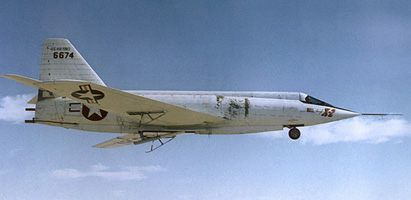 |
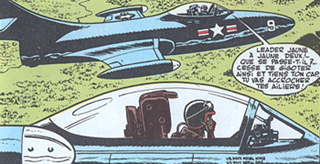 |
Some US Navy fighters Grumman F9F-2 Panther are shown for the first time in the story UN AVION N'EST PAS RENTRE . |
Buck Danny is also flying the Grumman F9F-2 Panther in the adventure NC22654 NE REPOND PLUS
|
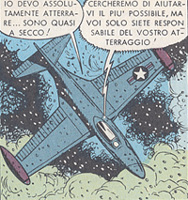 |
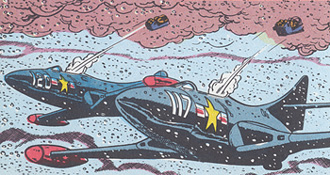 |
In the stories MENACE AU NORD and BUCK DANNY CONTRE LADY X a complete Panther squadron is involved in a dangerous mission in the North Pole. |
Buck Danny and his squadron of Grumman F9F-2 Panther are also involved in another critical mission in the stories ALERTE EN MALAISIE and LE TIGRE DE MALAISIE
|
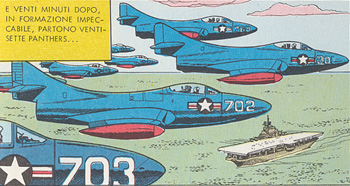 |
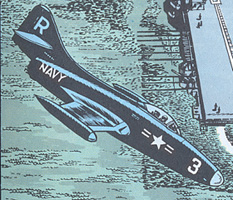 |
Because its longer nose the Panther depicted in the first page of the story UN AVION N'EST PAS RENTRE it is more likey the advanced photo-recon variant of the Panther designated as F9F-5P |
The Grumman F9F-2 Panther is also shown in the first story of the new "e;Classic"e; adventures of Buck Danny titled SABRE SUR LA COREE and DUEL SUR MIG ALLEY
|
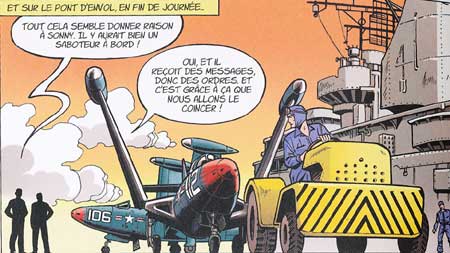 |
 |
A Panther is also well depicted by Arroyo on a short humorous Buck Danny story by Zumbiehl and Arroyo published in the Spirou magazine: volume #4000 and # 4001/4002. |
Some Grumman F9F-2 Panther are also shown in the Buck Danny Classic # 8 titled LE REPAIR DE L'AIGLE
|
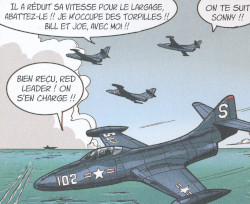 |
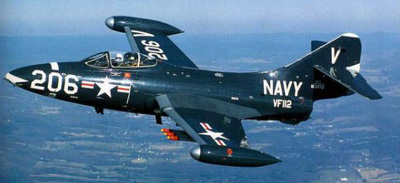 |
The Grumman F9F Panther was the manufacturer's first jet fighter and the U.S. Navy's second. The Panther was the most widely used U.S. Navy jet fighter of the Korean War. It flew 78,000 sorties and was responsible for the first air kill by the US Navy in the war, the downing of a North Korean Yakovlev Yak-9 fighter. It was armed with; Guns: 4× 20 mm (0.787 in) M2 cannon, 190 rounds/gun Hardpoints: Underwing hardpoints with provisions to carry combinations of:
Rockets: 6× 5 in (127 mm) rockets on underwing hardpoints Bombs: 2,000 lb (910 kg) of bombs
|
The Panther F9F-5P was the unarmed photo-reconnaissance version. The modified camera nose increased the F9F-5P lenght from 38 feet 10 1/2 inches to 40 feet.
| 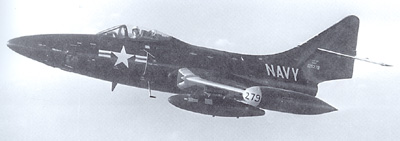 |
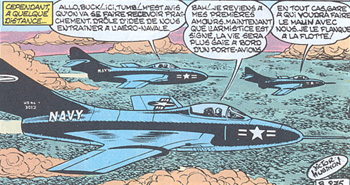 |
The Grumman F9F-6 Cougar is the first US Navy jet piloted by Buck Danny and his comrades in the story UN AVIONS N'EST PAS RENTRE
|
The F9F-6 Cougar of the aircraft carrier Valley Forge are also shown in the story PATROUILLE A L'AUBE
|
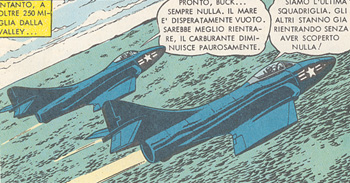 |
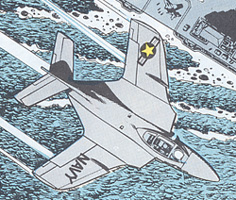 |
A Cougar (more likely the F9F-8 version ) with the new US Navy gray and white color, adopted in the middle of the 50s, is also shown in the story SOS SOUCOUPES VOLANTES
|
In the story TOP SECRET Buck Danny and his friends make a promotional acrobatic exibition with three F9F-8 Cougars
|
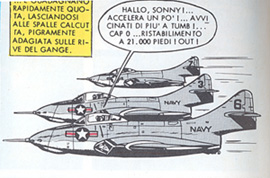 |
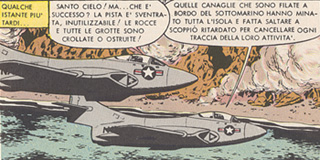 |
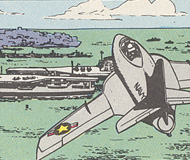 |
Some Cougars are also depicted in the story LE RETOUR DES TIGRES VOLANTS and in one single image of the story OPERATION MERCURY
|
A very rough image of a two-seat Cougar which is intended to be the F9F-8T version is used as chase plane by the Naval Air Test Center of Patuxent River in the story PROTOTYPE FX-13. Furthermore some F9F-8 Cougars from NAS PAtuxent River are also partially visible in the story ESCADRILLE ZZ.
|
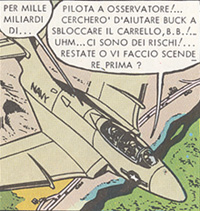 |
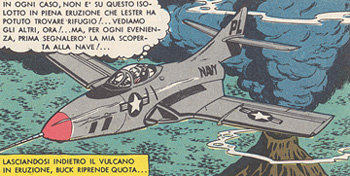 |
In the story UN PROTOTYPE A DISPARU Buck Danny and Sonny Tuckson are flying the advanced photo-recon variant of the Cougar designated as F9F-8P
|
The Grumman F9F/F-9 Cougar was an aircraft carrier-based fighter aircraft for the United States Navy. Based on the earlier Grumman F9F Panther, the Cougar replaced the Panther's straight wing with a more modern swept wing. The Navy considered the Cougar an updated version of the Panther, despite having a different official name, and thus Cougars started off from F9F-6 upwards. It was armed with; Guns: 4× 20 mm (0.787 in) M2 cannon, 190 rounds per gun Rockets: 6× 5 in (127 mm) rockets Missiles: 4× AIM-9 Sidewinder air-to-air missiles Bombs: 2× 1,000 lb (450 kg) bombs
|
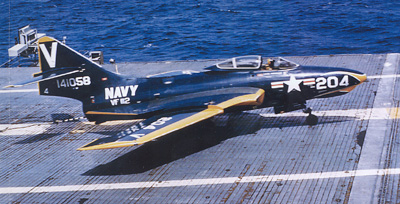 |
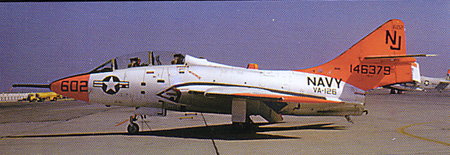 |
Because of the operational accident rate of swept-wing aircraft, Grumman began development of a two-seat trainer version of the F9F Cougar designed F9F-8T. These aircraft had a spendid 17-year career with the Naval Training Command untill the February 1974.
|
The advanced version of the photo-recon variant of the Cougar designated F9F-8P "Photo Cougar" was designed with a much larger nose section for an expanded camera suite, replacing the four 20-mm cannon and ammunition of the F9F-8
|
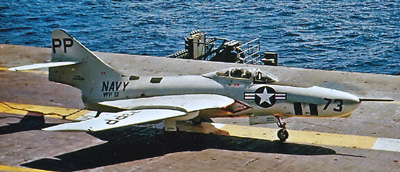 |
|
Six-engines bomber "Tupolev ?" |
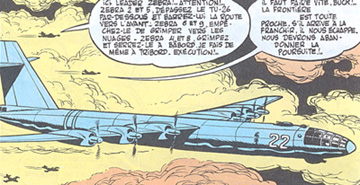 |
In the story UN AVION N'EST PAS RENTRE a fantasy North Korean or Chinese six-engines bomber is depicted. This bomber is identified in the story as a Tupolev call sign "TU 26". The misterious large bomber depicted in the story could be probably intended as the late 40s Tupolev prototype Tu-85. |
At the end of the 1940s, Vladimir Dobrynin's engine design bureau had developed a new air-cooled, twenty-four- cylinder in-line piston engine, the VD-4K, which offered a 4,300hp supercharged power output. Dmitri Markov set about designing a very long-range strategic bomber with these engines. This prototype designed as Tu-85 carried sixteen crew members in a pressurised cabin. and it was armed with five turrets each fitted with a pair of NR-23 cannons which could be remotely controlled by a gunner, who had a screen to show the arc of fire from each position a development of the B-29/Tu-4 system. Only one Tu-85, the prototype was built. It was the last large Tupolev aircraft without swept wings.
|
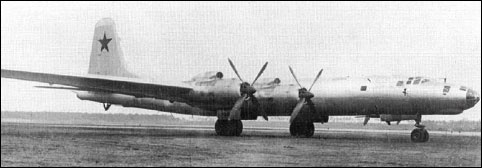 |
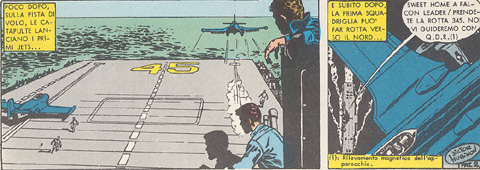 |
Some McDonnell F2H-2 Banshee are well depicted in a couple of images in the story PATROUILLE A L'AUBE. |
The McDonnell F2H Banshee was a military carrier-based jet fighter aircraft, used by the United States Navy from 1948 to 1959 and by the Royal Canadian Navy from 1955 until 1962. The Banshee had unswept wings, a single seat, and two engines. Together with the F9F Panther, the Banshee was one of the USN's primary single-seat fighters during the Korean War. A photo-recon version of the Banshee designated F2H-2P was also manufactured furthermore during the middle of 50s a larger and improved version of the Banshee designated F2H-3 was also present. The Banshee was armed with; Guns: 4× 20 mm (0.787 in) Colt Mk 16 cannon, 150 rounds/gun Rockets: 8× 60 lb High Explosive rockets or 6× 500 lb bombs and 2× 60 lb H.E. rockets.
|
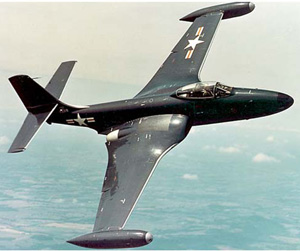 |
|
Sikorsky H-19 (S-55) Chickasaw / HO4S |
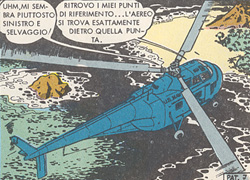 |
A Sikorsky HO4S Chickasaw Naval designation of the H-19 is well depicted in the story PATROUILLE A L'AUBE. |
An H-19 of the US Air Force is also present in the story BUCK DANNY CONTRE LADY X.
|
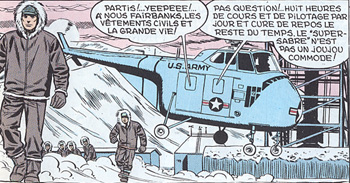 |
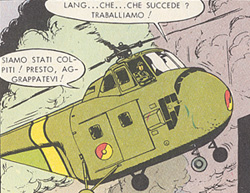 |
In the stories LES TIGRES VOLANTS A LA RESCOUSSE and TIGRES VOLANTS CONTRE PIRATES three helicopters H-19 are on duty with the new " Flying Tigers" group lead by Buck Danny. |
An HO-45 of the US Navy is also present in the Classic story #8 LE REPAIR DE L'AIGLE.
|
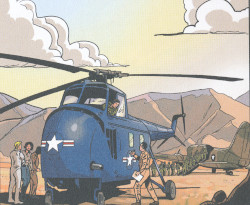 |
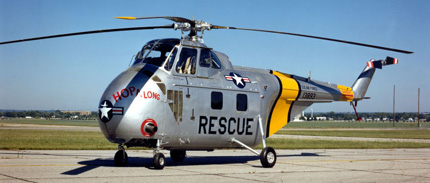 |
The Sikorsky H-19, (also known as the S-55) was a multi-purpose helicopter used by the United States Army. It was also license-built by Westland Aircraft as the Westland Whirlwind in the United Kingdom. United States Navy and Coast Guard models were designated HO4S, while those of the U.S. Marine Corps were HRS. The H-19 underwent live service tests during the Korean War beginning in 1951 as an unarmed transport helicopter. Undergoing tests such as medical evacuation, tactical control and front-line cargo support, the helicopter succeeded admirably in surpassing the capabilities of the H-5 Dragonfly which had been used throughout the Korean conflict by the Army and the Navy.
|
|
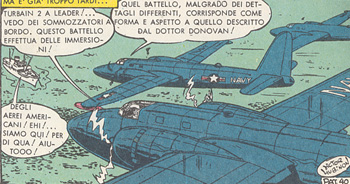 |
A naval patrol bomber P2V Neptune is shown in the story PATROUILLE A L'AUBE |
An advanced version of the Neptune (more likely the P2V-7 later P-2H) with the grey and white color adopted by the US Navy during the middle of the 50s is also shown in the story SOS SOUCOUPES VOLANTES!.
|
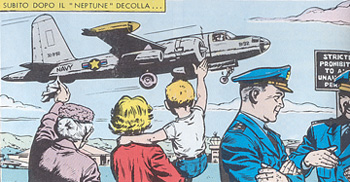 |
 |
A Neptune is partialy visible also in one image in the story LES VOLEURS DE SATELLITE
. |
The Lockheed P-2 Neptune (until 1963 the P2V Neptune) was a naval patrol bomber and anti-submarine warfare (ASW) aircraft for the United States Navy between 1947 and 1978, replacing the PV-1 Ventura and PV-2 Harpoon and being replaced in turn with the P-3 Orion. Designed as a land-based aircraft, the Neptune never made a carrier landing, although a small number of aircraft were converted for carrier use and successfully launched.
|
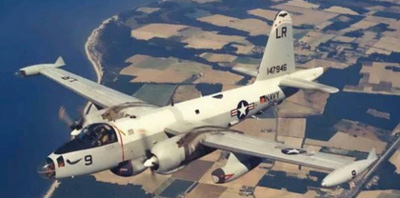 |
|
Piasecki H-21 Shawnee/Workhorse / HPR-1 Rescuer |
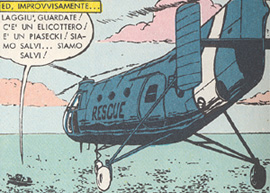 |
A rescue helicopter Piasecki H-21 Shawnee is depicted at the end of the story PATROUILLE A L'AUBE. Because its Navy blue color it should be intended as the even older Piasecki HRP-1 Rescuer being the H-21 only used (In the USA Armed Forces) by US Army and US Air Force but not by the US Navy. |
Some USAF Piasecki H-21 Workhorse are well depicted in the story MENACE AU NORD. This kind of helicopter was largely used for Arctic rescue because it performed so well at low temperatures.
|
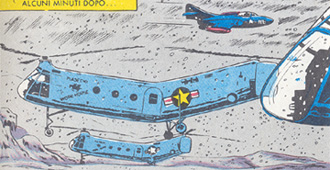 |
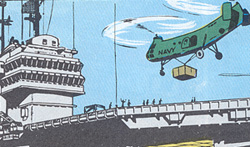 |
Another H-21 is shown in the story SOS SOUCOUPES VOLANTES! even if also in this case being the Naval "flying banana" it should have been an HRP-1. Indeed the HRP-1 was already obsolete during the middle of the 50s when the story is placed.
|
The Piasecki H-21 Workhorse/Shawnee is an American helicopter, the fourth of a line of tandem rotor helicopters designed and built by Piasecki Helicopter (later Boeing Vertol). Commonly called the "flying banana", it was a multi-mission helicopter, utilizing wheels, skis, or floats. It was used for Arctic rescue because it performed so well at low temperatures.
|
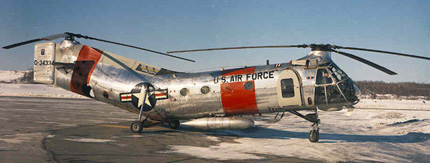 |
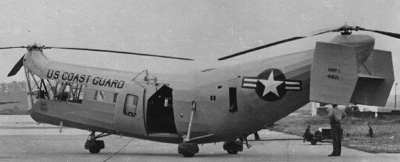 |
Piasecki Helicopter designed and successfully sold to the US Navy a series of tandem rotor helicopters, starting with the HRP-1 of 1944. The HRP-1 was nicknamed the "flying banana" because of the upward angle of the aft fuselage that ensured the large rotors did not hit each other in flight. The name would later be applied to other Piasecki helicopters of similar design, including the H-21.
In 1949, Piasecki provided the H-21 Workhorse to the USAF, which was an improved, all-metal derivative of the HRP-1.
|
|
Lockheed C-69 Constellation / L-049 / L-649 |
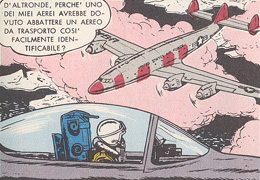 |
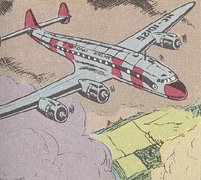 |
In the story NC 22654 NE REPOND PLUS both the Military transport C-69 and the Civil L-049 Constellation are depicted. |
A civilain L-049 Constellation from AIR INDIA is also depicted in the adventure TOP SECRET. |
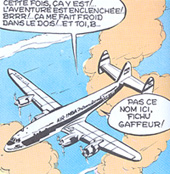 |
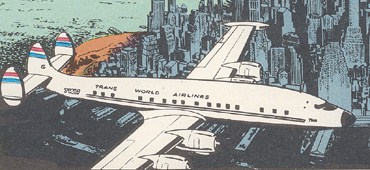 |
The more powerful L-649 Constellation is also shown in the first page of the adventure LES VOLEURS DE SATELLITE. |
An USAF C-69 Constellation is represented by Arroyo in the adventure ALERTE ROUGE. |
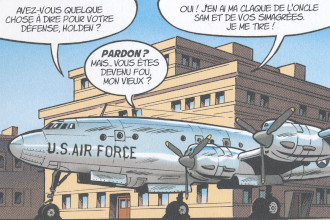 |
The Lockheed Constellation, affectionately known as the "Connie", was a four-engine propeller-driven airliner built by Lockheed between 1943 and 1958. A total of 856 aircraft were produced in four models, all distinguished by a distinctive triple-tail design and graceful, dolphin-shaped fuselage. It was used as both a civilian airliner and U.S. military air transport plane. The initial military versions carried the Lockheed designation of L-049; as World War II came to a close, some were completed as civil L-049 Constellations. The first purpose-built passenger Constellation was the more powerful L-649, followed by the L-1049 Super Constellation and L-1649 Starliner. |
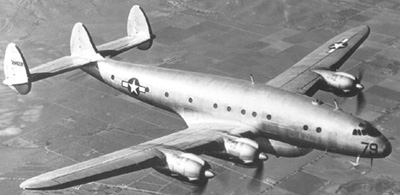 |
|
Fairchild C-119 Flying Boxcar |
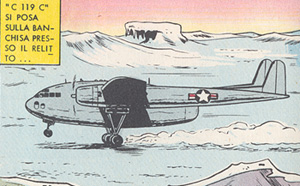 |
In the story NC 22654 NE REPOND PLUS the military transport aircraft C-119 is well depicted. |
The military transport aircraft C-119 is also represented in the story LE TIGRE DE MALAISIE. |
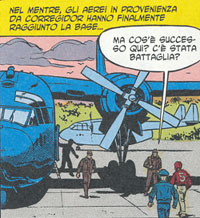 |
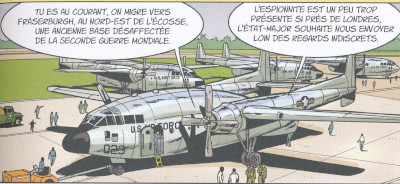 |
Some military transport aircraft C-119 are also well represented in the Buck Danny classic#9 LE VOL DU RAPIER. |
The Fairchild C-119 Flying Boxcar (Navy designation R4Q) was an American military transport aircraft developed from the World War II Fairchild C-82 Packet, designed to carry cargo, personnel, litter patients, and mechanized equipment, and to drop cargo and troops by parachute. The first C-119 made its initial flight in November 1947, and by the time production ceased in 1955, more than 1,100 C-119s had been built. Its cargo hauling ability earned it the nickname "Flying Boxcar".
|
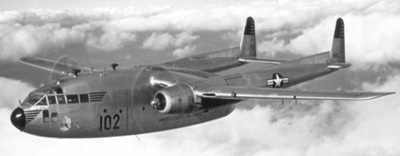 |
|
Sikorsky H-5 Dragonfly / HO2S-1 |
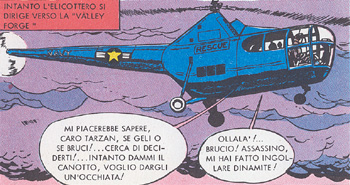 |
The US Navy variant of the helicopter Sikorsky H-5 Dragonfly designated HO2S-1 is well depicted in the story MENACE AU NORD. |
In the story BUCK DANNY CONTRE LADY X Buck Danny is rescued at the last moment by his friends flying an USAF Sikorsky H-5.
|
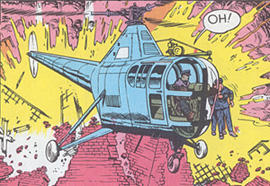 |
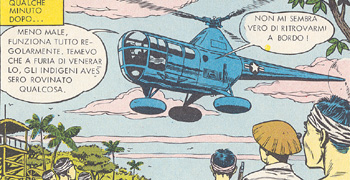 |
Another US Navy HO2S-1 Dragonfly is also shown in the adventure ALERTE EN MALAISIE. |
Even if already obsolete during the late 50s an improbable HO2S-1 Dragonfly with white and grey US Navy color is also depicted in the story LE RETOUR DES TIGRES VOLANTS.
|
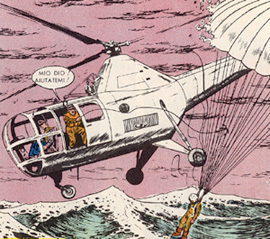 |
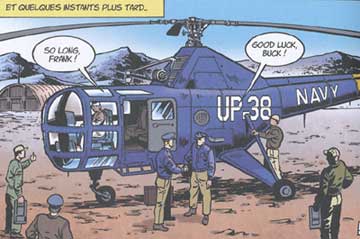 |
The HO2S-1 Dragonfly is also shown in the first story of the new "Classic6quot; adventures of Buck Danny titled SABRE SUR LA COREE and DUEL SUR MIG ALLEY
|
An HO2S-1 Dragonfly is also shown in the Buck Danny Classic #8 LE REPAIR DE L'AIGLE.
|
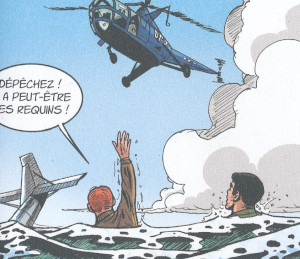 |
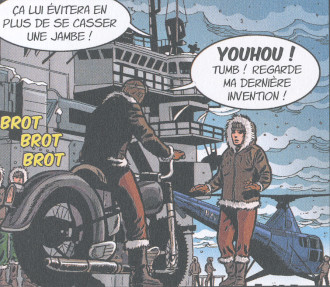 |
Even if obsolete for that period a HO2S-1 Dragonfly is also shown in the Buck Danny classic#9 titled LE VOL DU RAPIER
|
Some HO2S-1 Dragonfly are also shown in the Buck Danny Classic #11 L'OMBRE ROUGE and #12 ATOMIC CITY.
|
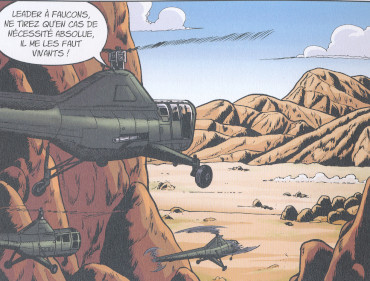 |
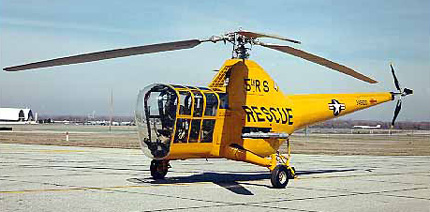 |
The Sikorsky H-5 (R-5 up to 1948, company VS-327), is a helicopter built by Sikorsky Aircraft Corporation, formerly used by the United States Air Force, and its predecessor, the United States Army Air Forces, as well as the United States Navy and United States Coast Guard (with the designations HO2S and HO3S). It was also used by the United States Post Office Department. During its service life, the H-5 was used for rescue and mercy missions throughout the world. It gained its greatest fame, however, during the Korean War when it was called upon repeatedly to rescue United Nations' pilots shot down behind enemy lines and to evacuate wounded personnel from frontline areas before being replaced in most roles by the H-19 Chickasaw.
|
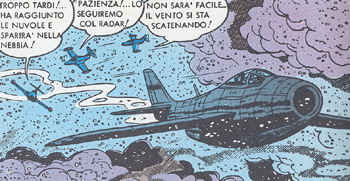 |
Lady X or some of her mercenary pilots is flying on a Saab J-29 Tunnan during the expionage mission of the story MENACE AU NORD |
Five Saab J-29 Tunnan are also part of the Air Force militia of the General Diaz. This Manteguan dictator used these jets to excort the B-26 during the nuclear attack agaist the headquarter of his enemy Cutierrez.
|
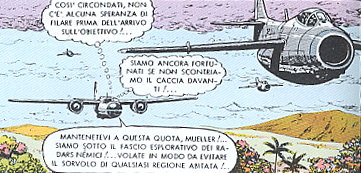 |
 |
A Saab J-29 Tunnan is also well represented in the Buck Danny classic#9 LE VOL DU RAPIER |
The Saab J-29, popularly called Flygande tunnan ("the flying barrel"), was a Swedish fighter designed and manufactured by Saab in the 1950s. It was Sweden's second turbojet-powered combat aircraft, the first being the Saab 21R. Despite its rotund appearance, the J-29 was fast and agile, serving effectively in both fighter and fighter-bomber roles into the 1970s. It was armed with 4x Hispano Mark V 20 mm cannons
75 mm (3 in) unguided rockets Rb 24 air-to-air missiles 145 mm (5.8 in) anti-armor rockets, 150 mm (6 in) HE (high-explosive) rockets, 180 mm (7.2 in) HE antiship rockets.
| 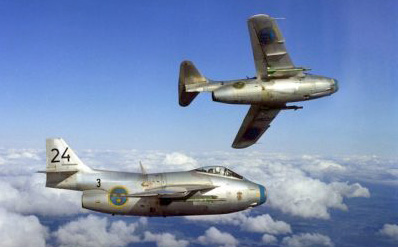 |
|
Medium Range Ballistic Missile |
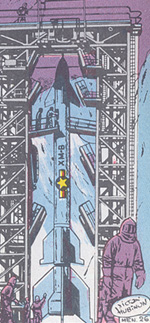 |
A fantasy Medium Range Ballistic Missile with nuclear warhead is shown in the story MENACE AU NORD. In the story is declared that the missile derived from the Viking rocket projet. Because its military characteristic more likely this MRBM should be intended as a Redstone missile which was actually used for the first live nuclear missile tests during the early 50s. |
The U.S. Navy's Viking rocket was conceived shortly after WWII as a replacement for the V-2 rocket. The Viking was designed specifically as a research rocket by the Naval Research Laboratory (NRL).
The first Viking was flown at White Sands in May 1949. Twelve Vikings were built, each differing from the one before. Ten of these rockets were fired at White Sands for upper air research. Viking #4 was fired at sea near Christmas Island in the Pacific from the USS Norton Sound. Viking #8 was never flight tested -- it broke free from its restraining bolts during a pre-flight static test of its rocket engine prior to its test flight.
Viking #11 was fired at White Sands on May 24, 1954 and soared to an altitude of 158 miles and attained a speed of 4,000 miles per hour.
In its final configuration, Viking was 45 feet long and 45 inches in diameter. The major structural material was aluminum. It was powered by a liquid propellant rocket engine producing 20,000 pounds of thrust using liquid oxygen and alcohol. Like the V-2, peroxide was decomposed to provide steam for operating its propellant turbo-pump. It was capable of carrying more than 1,000 pounds of instruments to an altitude of at least 150 miles.
Vikings #13 and #14 were integrated into the Vanguard earth satellite program in late 1955. The two rockets were fired at Patrick AFB as test rockets for the program.
|
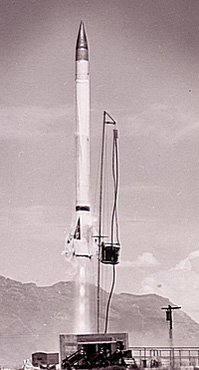 |
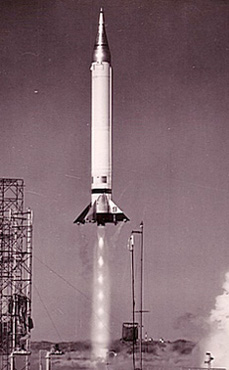 |
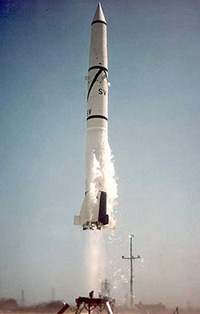 |
First launched in 1953, the American Redstone rocket (Redstone missile) was a direct descendant of the German V-2. Redstone was used for the first live nuclear missile tests by the United States. It was also referred to as the Redstone MRBM (medium range ballistic missile), although in the true sense of the definition within the United States Department of Defense of MRBM (a missile with a maximum range between 1,000 kilometres (620 mi) and 3,000 kilometres (1,900 mi) this was a misnomer.
|
|
North American F-100 Super Sabre |
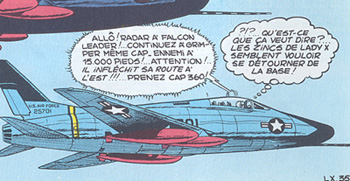 |
In the story BUCK DANNY CONTRE LADY X to better fight against Lady X's fighters Buck Danny and his comrades are trained to fly with the new USAF fighters North American F-100 Super Sabre. |
Lady X reminds his North Pole fight against the F-100 piloted by Buck Danny and his friends in the story UN PROTOTYPE A DISPARU
|
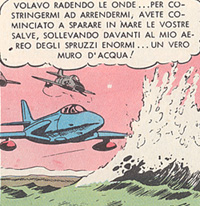 |
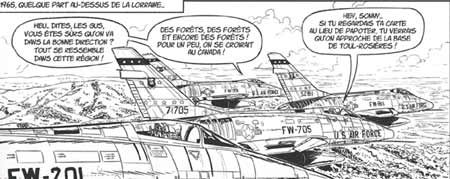 |
In the crossover story LA RENCONTRE Buck Danny and his comrades are visiting the Dijon French Air base of Tanguy and Laverdure with three F-100D single seat and one F-100F two seat training version. |
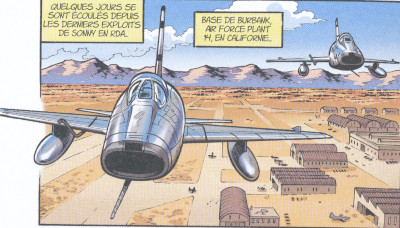 |
Some F-100D are also shown by Arroyo in the Buck Danny classic # 5 and #6 OPERATION RIDEAU DE FER and ALERTE ROUGE. |
The North American F-100 Super Sabre was a jet fighter aircraft that served with the United States Air Force (USAF) from 1954 to 1971 and with the Air National Guard (ANG) until 1979. As the first of the Century Series collection of USAF jet fighters, it was the first of a series of US fighters capable of supersonic speed in level flight and made extensive use of titanium throughout the aircraft. The F-100 was designed originally as a higher performance follow-on to the F-86 air superiority fighter. Adapted as a fighter bomber, the F-100 would be supplanted by the Mach 2 class F-105 Thunderchief for strike missions over North Vietnam. The F-100 flew extensively over South Vietnam as the Air Force's primary close air support jet until replaced by the more efficient subsonic A-7 Corsair II.
| 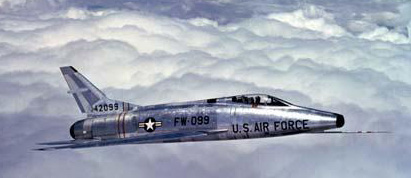 |
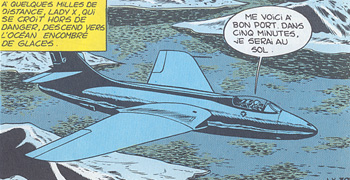 |
Lady X during her expionage mission over the North Pole is flying an Hawker Hunter as shown in the story BUCK DANNY CONTRE LADY X |
In the story UN PROTOTYPE A DISPARU Lady x reminds the North Pole expionage mission and the fight against the F-100 of Buck Danny squadron culminated in her almost fatal incident.
|
 |
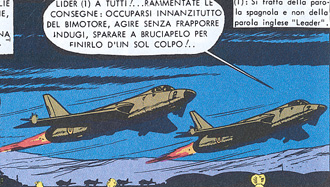 |
In the stories ALERTE ATOMIQUE and L'ESCADRILLE DE LA MORT some Hawker Hunter are also used by the Cutierrez's Air Force.
|
The Hawker Hunter was a jet fighter aircraft of the 1950s and 1960s. The Hunter served for many years with the Royal Air Force and was widely exported, serving with 19 air forces. A total of 1,972 Hunters were produced by Hawker Siddeley and under licence. It was armed with 4x 30 mm ADEN cannon, 120 rounds each, usually with a max of 150 per gun. Guns fitted into a removable gun pack.
Up to 7,400 lb (3400 kg) of weapons on four hardpoints (Singapore Hunters had a centreline hardpoint) including AIM-9 Sidewinder, AGM-65 Maverick, SNEB 68 mm rockets in 18-round Matra pods, SURA rockets.
|
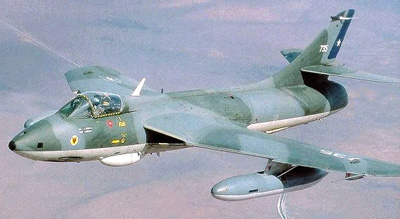 |
|
Piasecki HUP Retriever / UH-25 |
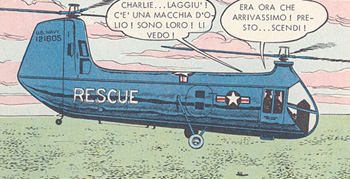 |
An US NAvy Piasecki HUP-2 Retriever (US Navy variant of the UH-25) is well depicted in the story ALERTE EN MALAISIE |
Another Piasecki HUP-2 Retriever is shown in the adventures SOS SOUCOUPES VOLANTES! and UN PROTOTYPE A DISPARU
|
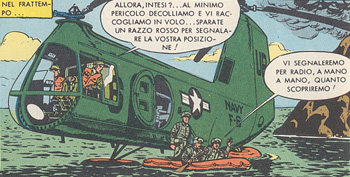 |
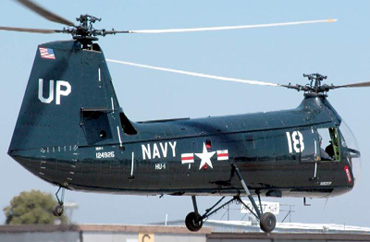 |
The Piasecki H-25 Army Mule/HUP Retriever was a compact single radial engine, twin overlapping tandem rotor utility helicopter developed by the Piasecki Helicopter Corporation during the late 1940s and produced during the early 1950s. The company changed its name in the 1956 to Vertol Aircraft Corporation and subsequently was bought by Boeing Aircraft Company in 1960, and became Boeing-Vertol. The prototype was designated by the Navy as the XHJP-1, and first flew in March 1948. It was selected by the Navy for production, as the HUP-1 in a side-by-side flight evaluation against the Sikorsky XHJS-1. It entered service with the Navy and USMC from 1949.
|
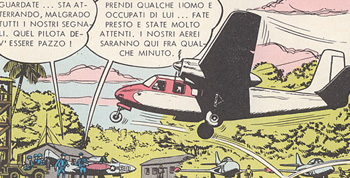 |
The 520 version of the civilain aircraft Aero Commander 500 is shown at the end of the adventure LE TIGRE DE MALAISIE |
The Aero Commander 500 is the first in a series of light twin-engined aircraft originally built by the Aero Design and Engineering Company in the late 1940s. It later became the Aero Commander division of Rockwell International. The initial production version was the Aero Commander 520. Versions manufactured after 1967 are known as the Shrike Commander. In military service, it was initially designated the L-26 though in 1962 this was changed to U-4 for the USAF and U-9 for the US Army.
|
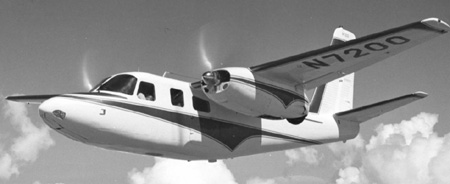 |
|
Grumman TF-1 Trader / S2F Tracker / E-1B Tracer |
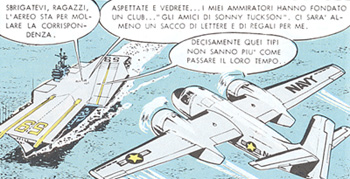 |
A carrier-onboard-delivery aircraft Grumman TF-1 Trader makes its first apperance in the Buck Danny adventures in the story SOS SOUCOUPES VOLANTES! |
Some anti-submarine variant of the trader designated as S2F Tracker are shown in the stories SOS SOUCOUPES VOLANTES! and UN PROTOTYPE A DISPARU
|
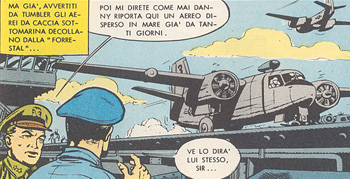 |
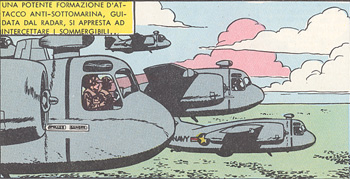 |
Some others S-2 Tracker are also well depicted in the story OPERATION MERCURY |
The airborne early warning variant of the C-1 Trader designated E-1B Tracer seems also depicted in one barelly visible image in the story OPERATION MERCURY
|
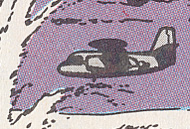 |
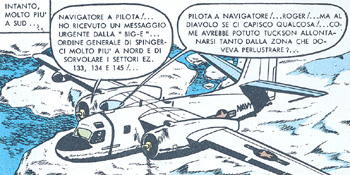 |
A Tracker from the nuclear aircraft carrier Enterpriseis also shown in the story LE MYSTERE DES AVIONS FANTOMES |
Another C-1 Trader is also well depicted in the story ALERTE ATOMIQUE.
|
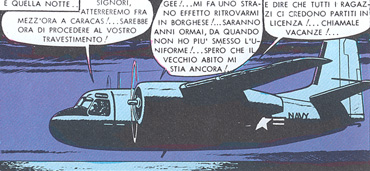 |
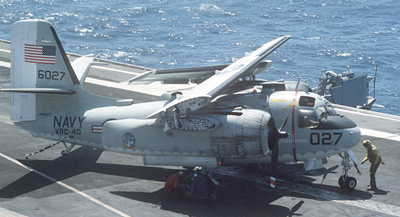 |
The TF-1 Trader (later C-1 Trader) was a carrier-onboard-delivery (COD) variant of the S2F Tracker. It was replaced by a similar version of the E-2 Hawkeye, the C-2 Greyhound. The TF-1 (C-1) was outfitted to carry nine passengers or 3500 pounds of cargo and first flew in January 1955. Through out the 1960s and 1970s the C-1 Trader carried mail and supplies to aircraft carriers on station in the Pacific Ocean during the Vietnam War and also served as a trainer for all weather carrier operations.
|
The Grumman S2F Tracker (later S-2) was the first purpose-built, single airframe anti-submarine warfare (ASW) aircraft to enter service with the US Navy. It was armed with; 2× homing torpedoes (Mk. 41, Mk. 43, or Mk. 34), depth charges (Mk. 54), or mines in the bomb bay 6× underwing hardpoints for torpedoes, depth charges, or rockets.
Its predecessor, the AF-2 Guardian was the first purpose-built aircraft system for ASW, using two airframes, one with the detection gear, and the other with the weapons.
|
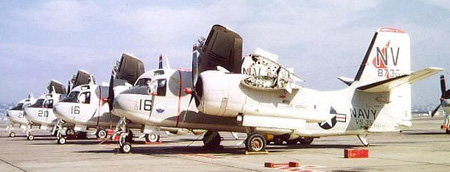 |
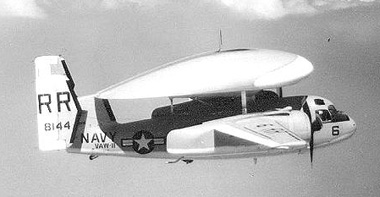 |
The E-1B Tracer was the first purpose built airborne early warning aircraft used by the United States Navy. It was a derivative of the C-1 Trader and first entered service in 1958. It was replaced by the more modern E-2 Hawkeye in the early 1970s. The Tracer was fitted with the Hazeltine AN/APS-82 in its radome. The radar featured an Airborne Moving Target Indicator (AMTI), which analyzes the Doppler shift in reflected radar energy to distinguish a flying aircraft against the clutter produced by wave action at the ocean's surface. Separating a moving object from stationary background is accomplished by suitable hardware.
|
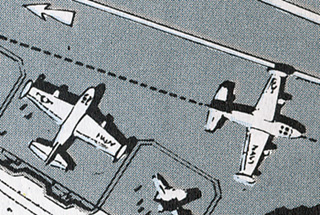 |
A couple of AJ-2 Savage have been represented on the flight deck of the USS Forrestal in the story SOS SOUCOUPES VOLANTES!. |
The North American AJ Savage was a large composite-powered carrier-borne Attack Bomber designed to deliver nuclear ordnance. It also performed photo reconnaissance duties and later on was used as an aerial refuelling platform. The North American AJ-1/2 and AJ-1/2P Savage aircraft were in a number of USN Heavy Attack Composite squadrons from 1948–1956, as well as in several Photographic Reconnaissance squadrons. The Heavy Attack versions were the first nuclear bomb carrying bombers able to be launched from and recovered on aircraft carriers.
|
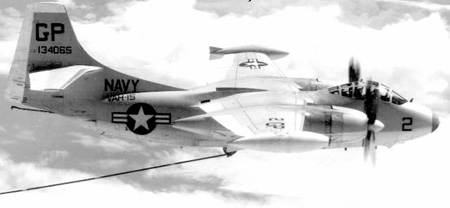 |
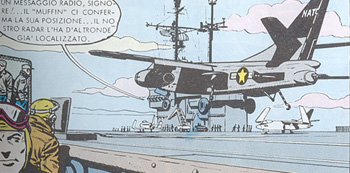 |
An A3D Skywarrior makes a carrier landing on board of the USS Forrestal in the story SOS SOUCOUPES VOLANTES!. |
An A3D Skywarrior is also partially visible in one image of the adventure TOP SECRET
|
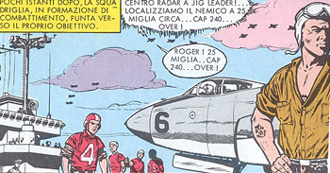 |
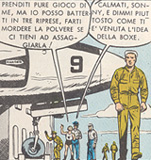 |
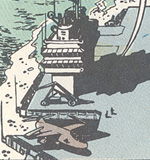 |
A couple of small images also shown A3D Skywarrior on board of the USS Saratoga in the stories LE RETOUR DES TIGRES VOLANTS and LES TIGRES VOLANTS A LA RESCOUSSE. |
Another A3D Skywarrior on board of the USS Forrestal is well depicted in the first page of the story X-15
|
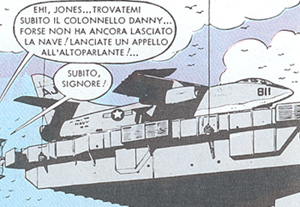 |
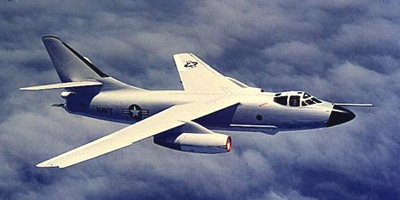 |
The Douglas A-3 Skywarrior was a strategic bomber built for the United States Navy and among the longest serving carrier-based jet aircraft. It entered service in the mid-1950s and was not retired until 1991. For many years after its introduction, it was also the heaviest aircraft ever flown from an aircraft carrier, earning it the unofficial nickname "The Whale". Its primary function for much of its later service life was as an electronic warfare platform and high capacity aerial refueling tanker.
A modified derivative also served in the U.S. Air Force until the early 1970s as the B-66 Destroyer. The Skywarrior is the only Navy attack aircraft intended as a strategic bomber to enter service.
|
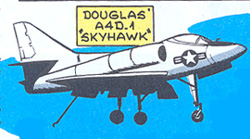 |
An A4D-1 Skyhawk is shown on a technical table in the story SOS SOUCOUPES VOLANTES!. |
Some A4D-1 are aslo well depicted in the adventure TOP SECRET. |
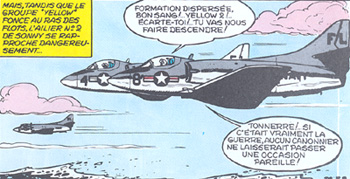 |
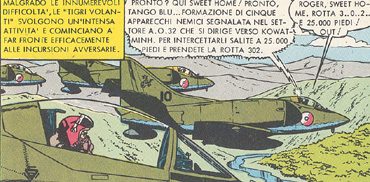 |
The A4D-1 Skyhawk are the aircraft used by the new "Flying Tigers" group leads by Buck Danny in the stories LES TIGRES VOLANTS A LA RESCOUSSE and TIGRES VOLANTS CONTRE PIRATES
|
An A-4 Skyhawk is also partially visible in the hangar of the USS Enterprise in the story LE MYSTERE DES AVIONS FANTOMES. |
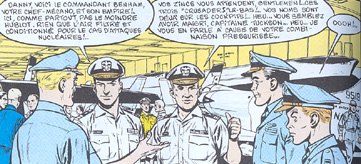 |
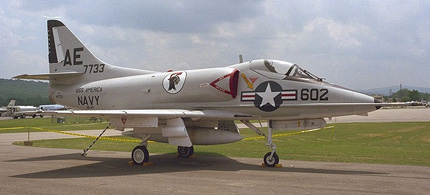 |
The Douglas A-4 Skyhawk was an attack aircraft originally designed to operate from United States Navy aircraft carriers. The aircraft was designed and produced by Douglas Aircraft Company (later McDonnell Douglas) and was originally designated the A4D under the US Navy's pre-1962 designation system.
Fifty years after the aircraft's first flight, and having played key roles in Vietnam, the Falklands and Yom Kippur wars, some of the nearly 3,000 Skyhawks produced remain in service with several air arms around the world, including active duty on a carrier. The US Navy began removing the aircraft from its front line squadrons in 1967, with the last retiring in 1975.
|
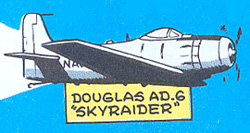 |
In the story SOS SOUCOUPES VOLANTES! A Douglas AD-6 Skyraider is depicted in a technical table which describes the typical Air Wing on board of the US Navy aircraft carries during the middle of the 50s. |
The Skyraider is also shown in the first story of the new "Classic" adventures of buck Danny titled SABRE SUR LA COREE and DUEL SUR MIG ALLEY
|
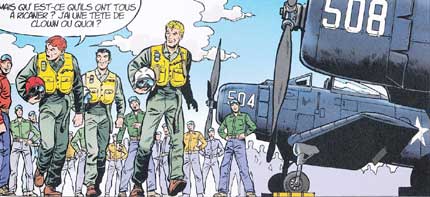 |
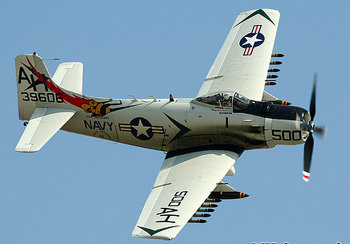 |
The Douglas AD (later A-1) Skyraider was a U.S. single-seat attack bomber of the 1950s, 1960s and early 1970s. A propeller-driven anachronism in the jet age, the Skyraider had a remarkably long and successful career well into the space age, and inspired a straight-winged, slow-flying, jet-powered successor which is still in front line service today, the A-10 Warthog.
It was armed with; Guns: 4 × 20 mm (0.787 in) cannon
Other: Up to 8,000 lb (3,600 kg) of ordnance on 15 external hardpoints including bombs, torpedoes, mine dispensers, unguided rockets, or gun pods
|
|
North American FJ-2/-3/-4 Fury |
 |
In the story SOS SOUCOUPES VOLANTES! a technical table shows an FJ-3 Fury even if because its general design it seems to be more likely an FJ-2 Fury. |
An FJ-3 from NAS PAtuxent River is barelly visible in the back ground of the first page in the story ESCADRILLE ZZ.
|
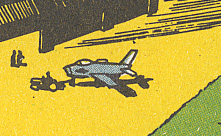 |
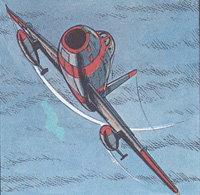 |
An old FJ-4 modified as target drone is well depicted in the story OPERATION "APOCALYPSE". In the reality the Aerial Target used by the US Navy was the drone version of the F-86 Sabre designated as QF-86.
|
The North American FJ-2/-3/-4 Fury were a series of swept-wing carrier-capable fighters for the United States Navy and Marine Corps. Based on the United States Air Force's F-86 Sabre, the FJ-series Fury aircraft featured folding wings and, eventually, a longer nose landing strut designed to both increase angle of attack upon launch and to absorb the shock of hard landings on an aircraft carrier deck. Although sharing a U.S. Navy designation with its distant predecessor, the straight-winged FJ-1 Fury, the FJ Fury evolved into a wholly different aircraft. The FJ-2 was not produced in large numbers until after that conflict had concluded. By then, because of a weak nose gear and arrestor hook on the FJ-2, the Navy preferred the F9F Cougar due to its superior slow-speed performance for carrier operations, and the 200 FJ-2 models built were delivered to the United States Marine Corps.
|
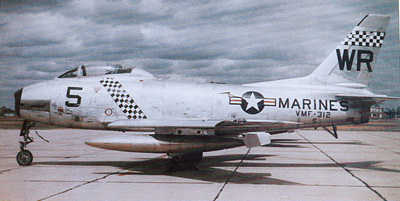 |
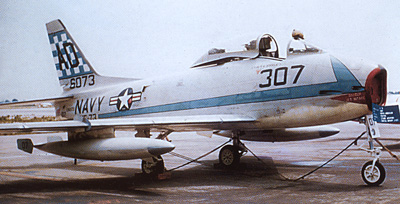 |
The development of the FJ-3, which was to be powered by a license-built version of the new Armstrong Siddeley Sapphire turbojet, resulted in its first flight in July 1953. Deliveries began in September 1954, and the FJ-3 joined the fleet in May 1955. An FJ-3 was the first fighter to land aboard the new supercarrier USS Forrestal in 1956. A total of 538 FJ-3s were built, including 194 FJ-3Ms with the ability to carry AIM-9 Sidewinder air-to-air missiles. Some FJ-3s were later modified to control Regulus and F9F-6K Cougar target drones. In 1955 the Navy added the new wing design that had been successful on the F-86F, providing space for additional fuel, and in 1956 retro-fitted all its FJ-3s with probe-and-drogue air refueling equipment.
|
The final versions of the Fury were the FJ-4 and FJ-4B, which featured several improvements on previous versions. Internal fuel capacity was increased, necessitating a distinctive, taller "razorback" rear deck. The tail was modified, as were the wings, to provide more positive control and stability during carrier landings, and the landing gear was widened. Delivery of FJ-4s began in February 1955. The FJ-4B was a fighter-bomber version, capable of carrying double the underwing stores, including nuclear weapons on a single station. A total of 152 FJ-4s and 222 FJ-4Bs were produced.
|
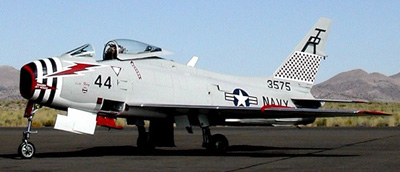 |
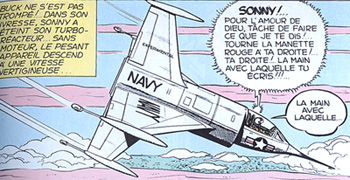 |
In the stories SOS SOUCOUPES VOLANTES! and UN PROTOTYPE A DISPARU a fantasy secret Vertical Takeoff and Landing (VTOL) prototype, designated X-17, is evaluated by Buck Danny and his special group "Zero" on board of the aircraft carrier USS Forrestal. This fantasy design VTOL jet takes more likely reference to the Experimental VTOL fighters like the US Navy Convair XFY-1 Pogo the Lockheed XFV-1 Salmon and the USAF Ryan X-13 Vertijet being the real X-17 only an experimental multi-stage rocket used to transport various reentry vehicle prototypes to very high altitudes. |
The Convair XFY Pogo tailsitter was an experiment in vertical takeoff and landing. The Pogo had delta wings and three-bladed contra-rotating propellers powered by a 5,500 hp Allison YT40-A-16 turboprop engine. It was intended to be a high-performance fighter aircraft capable of operating from small warships. Landing the XFY-1 was difficult as the pilot had to look over his shoulder while carefully working the throttle to land. Although a test flight was made on 19 May 1955, it again ended with failure, and on 1 August 1955, the project formally concluded. The last flight of the Pogo took place in November 1956. The projected armament should had included; Guns: 4× 20 mm (0.787 in) cannon, or Rockets: 48× 70 mm (2.76 in) Mk 4 Folding-Fin Aerial Rockets.
|
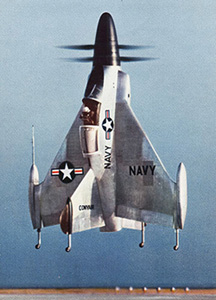 |
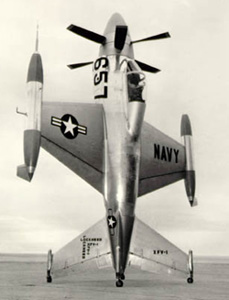 |
The Lockheed XFV-1 (sometimes referred to as the Salmon) was an experimental tailsitter prototype built by Lockheed to demonstrate the operation of a vertical takeoff and landing fighter for protecting convoys. Starting with a brief hop on 23 December, 1953 piloted by Herman "Fish" Salmon, the aircraft made a total of 32 flights, demonstrating transition between horizontal and vertical flight. No vertical takeoffs were performed, however. The aircraft was fitted with fixed landing gear so that it could take off horizontally. Performance was disappointing, and the project was cancelled in June of 1955.
The projected armament should had included; 4 20 mm cannons or 48 2.75 in rockets.
|
The Ryan X-13A-RY Vertijet, Ryan Model 69, was an experimental Vertical Take-Off and Landing aircraft flown in the United States in the 1950s. The main objective of the project was to demonstrate the ability of a pure jet to vertically takeoff, hover, transition to horizontal forward flight, and vertically land. The X-13 was designed to investigate vertical takeoff, horizontal flight transition, and return to vertical flight for landing. The first prototype of the X-13 was equipped with temporary tricycle landing gear. The X-13 was flown conventionally on December 10, 1955 to test its aerodynamic characteristics. The Vertijet was then fitted with a temporary "tail sitting" rig. On May 28, 1956, it was flown from the ground in a vertical position to test its hovering qualities. The X-13 VertiJet completed its first full-cycle flight at Edwards AFB, California on April 11, 1957, when it took off vertically from its mobile trailer, angled over into a horizontal attitude, and flew for several minutes. The X-13 then transitioned to vertical flight and slowly descended back onto its trailer and landed.
|
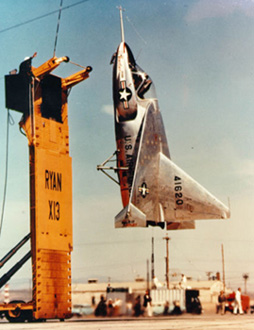 |
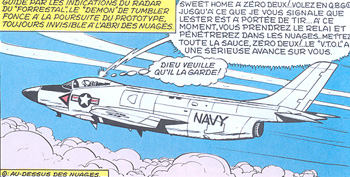 |
Some McDonnel F3H-2N Demons part of the Carrier Air Wing of the USS Forrestal are shown in the story SOS SOUCOUPES VOLANTES!. |
The F3H-2N Demons on board of the USS SAratoga are also used by Buck Danny and his friend in the story LE RETOUR DES TIGRES VOLANTS
|
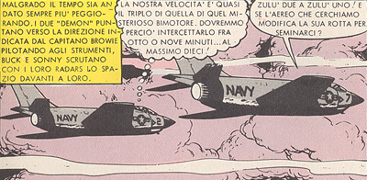 |
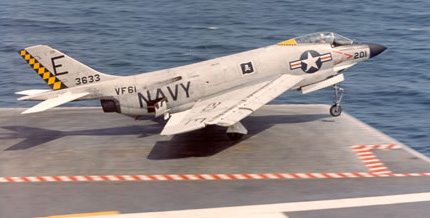 |
The McDonnell F3H Demon was a United States Navy carrier-based jet fighter aircraft. The successor to the F2H Banshee, after initial problems, it served from 1956 until 1964. Due to excellent visibility from the cockpit, the Demon earned the nickname "The Chair". Demon pilots were known colloquially as "Demon Drivers6quot; and those who worked on the aircraft were known as "Demon Doctors". The unfavorable power to weight ratio gave rise to the less flattering nickname "lead sled" sometimes shortened to "sled". It was armed with Guns: 4× 20 mm (0.787 in) Colt Mk 12 cannons, 150 rounds/gun
Missiles: 2× AIM-9 Sidewinder Bombs: 6,000 lb (2,720 kg) of bombs.
|
|
Bellanca 14-19 Cruisemaster |
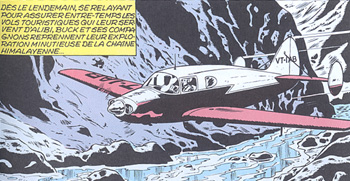 |
A Bellanca 14-19 Cruisemaster is used by Buck DannyTOP SECRET and MISSION VERS LA VALLEE PERDUE. |
The Bellanca Cruisemaster is low wing 4 place monoplane intended for medium-speed cruising flight. The Cruisemaster is the last of the Bellanca "triple tail" aircraft, and the model 14-19-2 was the last Bellanca taildragger. The aircraft uses wooden wings and a steel frame fuselage and tail surfaces, all covered with fabric.
|
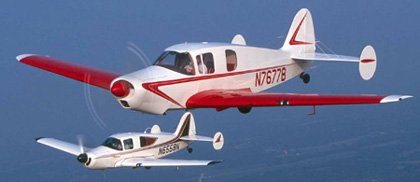 |
|
Bell 47 / H-13 Sioux / HTL |
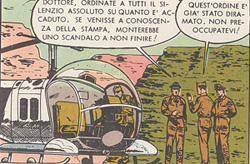 |
The US Navy variant of the helicopter Bell 47 (US Army designation H-13 Sioux more likely and HTL-4 is shown in the story ESCADRILLE ZZ |
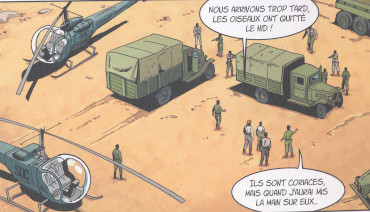 |
Some Bell 47 are also shown in the story MOLOTOK-41 NE REPOND PLUS |
The Bell 47 was the first helicopter certified for civilian use, on 8 March 1946. It was mostly designed by Arthur M. Young, who joined Bell Helicopter in 1941.
The Bell 47 helicopter entered U.S. military service in late 1946, in a variety of versions and designations for three decades. In the Korean War (1950-1953) it was designated the H-13 Sioux by the United States Army, a highlight of its extensive career. Initially, the US Navy procured several Bell 47s, designated HTL-1, between 1947 and 1958. The US Coast Guard evaluated this model, and procured two HTL-1s for multi-mission support in the New York Harbor. The most common US Navy version of the 47 was designated the HTL-4, and dispenses with the fabric covering on the tail boom. The US Coast Guard procured three HTL-5s in 1952 (similar to the HTL-4 but powered by a Franklin 0-335-5 engine) and used these until 1960.
|
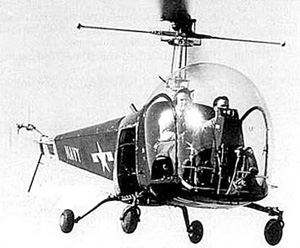 |
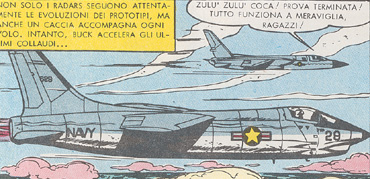 |
In the story ESCADRILLE ZZ an F8U-1 Crusader From the Naval Air Test Center of Patuxent River is shown as a chase plane of an A3J-1 (later A-5A) Vigilante. |
One of the prototypes of the Crusader designated XF8U-1 from the Naval Air Test Center is shown in the story LE RETOUR DES TIGRES VOLANTS. In the reality this very early version of the Crusader was tested during the middle of the 50s and it was no longer flying in the late 50s.
|
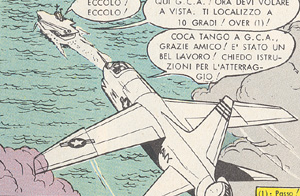 |
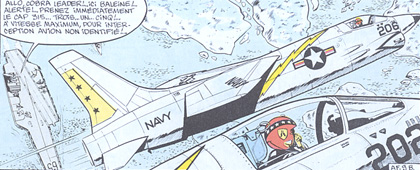 |
The Crusaders of the VF-33 on board of the USS Enterprise are well depicted in the story LE MYSTERE DES AVIONS FANTOMES. In this adventure the F8U-1E (Later F-8B) version is depicted even if in the reality during the 1962 the Crusaders of the VF-33 on board of the USS Enterprise were the F8U2-NE (later F-8E) variant.
|
The Crusaders of the USS ENTERPRISE (still wrongly depicted as F-8B instead of F-8E) are also shown in the story ALERTE ATOMIQUE. |
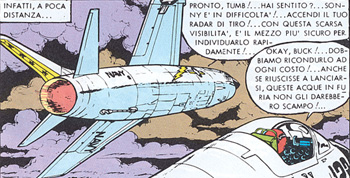 |
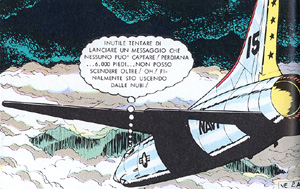 |
Sonny Tuckson is flying on a Crusader coming from the USS Ranger at the beginning of the adventure LA VALLEE DE LA MORT VERTE. Also in this case the early F-8B version is wrongly depicted instead of the later F-8E.
|
Some F-8E Crusader of VF-32 on board of USS Saratoga in the 1961 are well represented by Arroyo in the Buck Danny classic adventure #5 titled OPÉRATION RIDEAU DE FER.
| 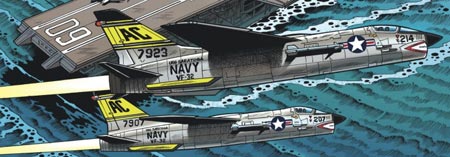 |
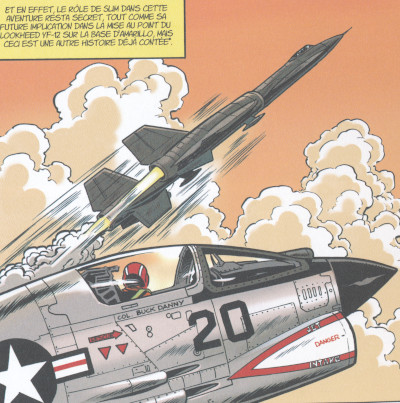 |
The Buck Danny's Crusader from USS Enterprise is also shown by Arroyo in the classic adventure #6 ALERTE ROUGE.
|
Some F-8U-1 Crusader of VF-103 on board of USS Forrestall in the 1958 are well represented by Le Bras in the Buck Danny classic adventure #9 titled LE VOL DU RAPIER and MOLOTOK-41 NE REPOND PLUS.
| 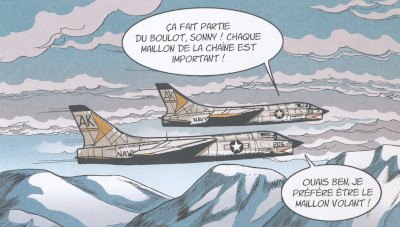 |
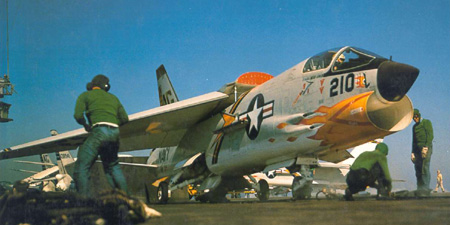 |
The F-8 Crusader (originally F8U) was a single-engine aircraft carrier-based fighter aircraft built by Vought. The first F-8 prototype was ready for flight in February 1955, and was the last American fighter with guns as the primary weapon. The RF-8 Crusader was a photo-reconnaissance development and operated longer in U.S. service than any of the fighter versions. Naval Reserve units continued to operate the RF-8 until 1987. It was armed with; Guns: 4× 20 mm (0.787 in) Colt Mk 12 cannons in lower fuselage, 125 rounds/gun Rockets: 8× Zuni rockets in four twin pods Missiles: 4× AIM-9 Sidewinder air-to-air missiles 2x AGM-12 Bullpup air-to-ground guided missiles Bombs: 12× 250 lb (110 kg) bombs or 4× 1,000 lb (450 kg) bombs or 2× 2,000 lb (900 kg) bombs
|
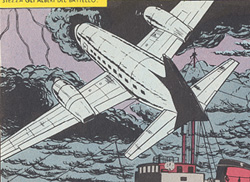 |
A transport aircraft Convair CV-240 is shown in the story LE RETOUR DES TIGRES VOLANTS |
The Convair CV-240 was an American airliner produced by Convair from 1947 to 1956. Convair's original design had two engines and 40 passenger seats. The first 240 flew on 16 March 1947, and production aircraft were first delivered to American on 28 February 1948. Seventy-five were delivered to American, with another fifty going to Western Airlines, Continental Airlines, Pan American Airways, KLM, and Trans Australia Airlines.
A CV-240 was the first private aircraft used in a United States presidential campaign. In 1960, John F. Kennedy used a CV-240 dubbed Caroline (after his daughter) during his campaign.
|
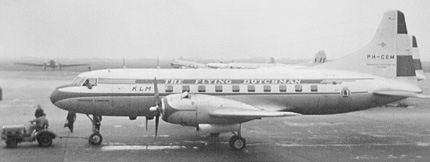 |
|
Douglas C-124 Globemaster II |
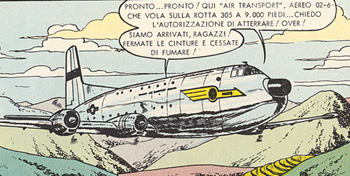 |
The USAF transport aircraft Douglas C-124C Globemaster II is well depicted in the first page of the story TIGRES VOLANTS CONTRE PIRATES. |
A Douglas C-124A Globemaster II is also well represented in the first story of the new "Classic" Adventures of Buck Danny titled SABRE SUR LA COREE and DUEL SUR MIG ALLEY
|
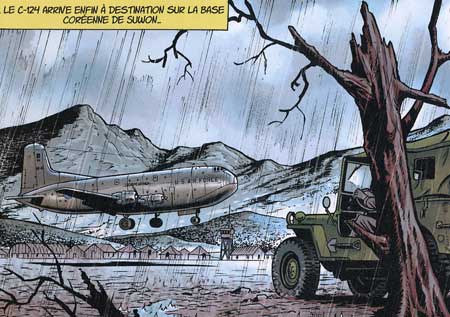 |
 |
The USAF transport aircraft Douglas C-124A Globemaster II is also represented in the Buck Danny classic #9 LE VOL DU RAPIER. |
The Douglas C-124 Globemaster II, nicknamed "Old Shakey", was a heavy-lift cargo aircraft built by the Douglas Aircraft Company in Long Beach, California. The USAF Strategic Air Command (SAC) was the initial operator of the C-124 Globemaster, with 50 in service from 1950 through 1962. Their primary duty was to transport nuclear weapons between air bases and to provide airlift of personnel and equipment during exercises and overseas deployments.
The Military Air Transport Service (MATS) was the primary operator until January 1966, when the organization was retitled Military Airlift Command (MAC). Shortly after MAC was formed, the last remaining examples were transferred to the Air Force Reserve (AFRES) and the Air National Guard (ANG).
Most aircraft were passed on to the Air National Guard and Air Force Reserve by 1970. The first ANG unit to receive the C-124C was the last Air Force unit to retire their aircraft (AF Serial No. 52-1066 & 53-0044) in September 1974.
| 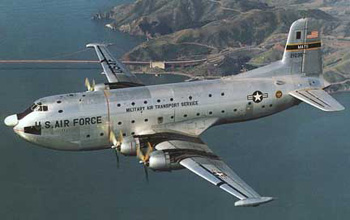 |
|
de Havilland Canada DHC-2 Beaver |
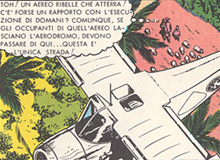 |
More likely a de Havilland Canada DHC-2 Beaver is used by Lady X in the story TIGRES VOLANTS CONTRE PIRATES. |
The de Havilland Canada DHC-2 Beaver is a single engined, high wing, propeller-driven, STOL aircraft developed by de Havilland Canada, primarily known as a bush plane. It is used for cargo and passenger hauling, aerial application (crop dusting and aerial topdressing), and has been widely adopted by armed forces as a utility aircraft. The U.S. Army Air Corps purchased several hundred and nine DHC-2s are still in service with the U.S. Air Force Auxiliary (Civil Air Patrol) for search and rescue.
|
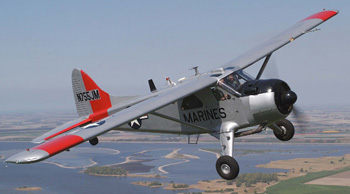 |
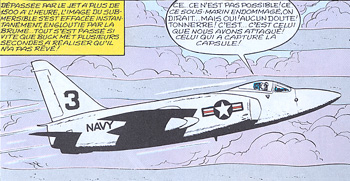 |
The Grumman F-11F Tigers (more likely the short nose variant) on board of the USS Forrestal are depicted in the stories OPERATON MERCURY and LES VOLEURS DE SATELLITE. Even if these stories are placed in the years 1961-1962 we have to considered that during the early 60s the F-11F Tiger was almost obsolete and replaced on the main US Navy Air Wing by the F-8 Crusader. |
An F-11F Tiger is also barelly visible on the flight deck of the USS Forrestal in the first image of the story X-15
|
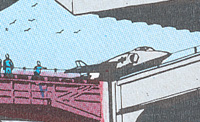 |
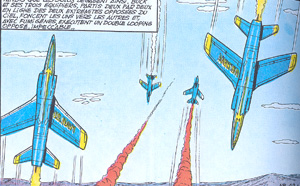 |
The Grumman F-11F Tigers (long nose variant) of the US Navy Acrobatic team Blue Angels are well depicted in the adventures LES ANGES BLEUS and LE PILOTE AU MASQUE DE CUIR. |
The Blue Angels' F-11F Tigers are also shown in one image of the "funny dream" short story MISSION SPECIALE published in the comic book TOUT BUCK BANNY n° 7
|
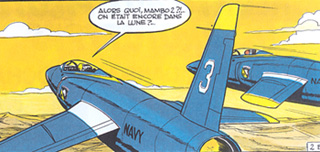 |
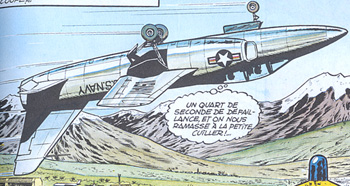 |
A fantasy two-seats version of the Grumman F-11F Tigers is depicted in the story LE PILOTE AU MASQUE DE CUIR. In the reality this version never existed being the F-11F pilots trained in the F9F-8T Cougar. The two-seat trainer version of the Cougar was in fact also used by the Blue Angels. |
The Grumman F11F Tiger was a single-seat carrier-based United States Navy fighter aircraft in operation during the middle 50s through the very early 60s. originally designated the F11F Tiger in April 1955 under the pre-1962 Navy designation system, it was redesignated as F-11 Tiger under the 1962 United States Tri-Service aircraft designation system. The initial production Tigers had a ",short nose" with an in-flight refueling receptacle fixed at the tip of the nose.
|
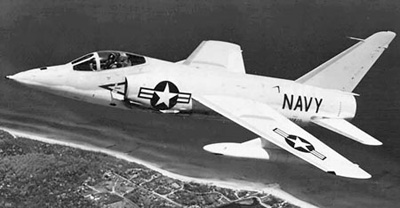 |
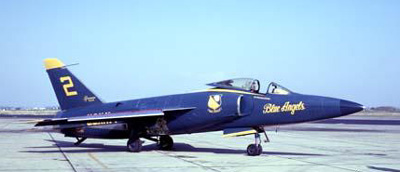 |
The F-11F early "short nose" version was soon relaced by the " long nose" variant. The aircraft was withdrawn from carrier service by 1961. However it was used in the training command in south Texas, Beeville and Kingsville, until the late 1960s.
While the F-11's fighter career was short, the Blue Angels performed in these aircraft from 1957 until 1969, when the Tiger was replaced by the McDonnell Douglas F-4 Phantom II.
|
|
Sikorsky SH-34 Seabat / UH-34 Seahorse / CH-34 Choctaw |
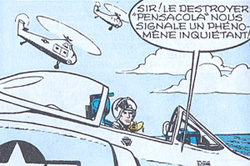 |
In the story OPERATION MERCURY some anti-submarine helicopters Sikorsky SH-34 Seabat are depicted. |
The USAF variant of this helicopter designated CH-34 Choctaw is shown on the adventure X-15
|
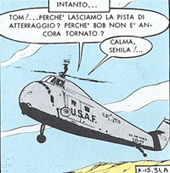 |
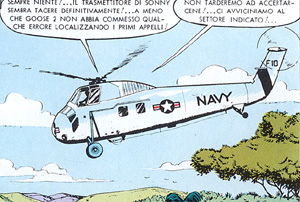 |
Even if already obsolete during the 70s the US Navy utility configuration designated UH-34 Seahorse is depicted in the story LA VALLEE DE LA MORT VERTE |
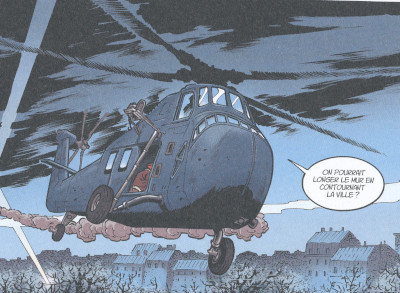 |
A CH-34 Choctaw depicted in dark blue for night operation is represented by Arroy in the Buck Danny classic #5 OPERATION RIDEAU DE FER |
The Sikorsky H-34 Choctaw (also known as the S-58) was a military helicopter originally designed by Sikorsky for the US Navy for service in the anti-submarine warfare (ASW) role. It was initially designated HSS-1 Seabat (in its anti-submarine configuration) and HUS-1 Seahorse (in its utility transport configuration) under the US Navy designation system. Under the US Army's system, also used by the fledgling US Air Force, the helicopter was designated H-34. The US Army applied the name Choctaw to the helicopter. In 1962, under the new unified system, the Seabat was redesignated SH-34, the Seahorse as the UH-34, and the Choctaw as the CH-34.
|
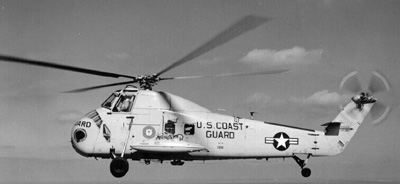 |
|
Mikoyan-Gourevitch MIG-19 "Farmer" |
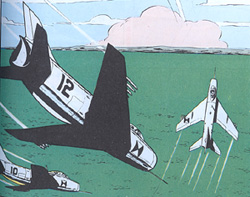 |
Some MIG-19s of the Dominican Republic Air Force are shown during a dog fight against the F-11F Tiger of Jerry Tumbler in the story LES VOLEURS DE SATELLITE In the reality the Dominican Republic never used this kind of fighter.
|
A couple of Albanian MIG-19 are also shown in the story L'ESCADRILLE FANTOME
|
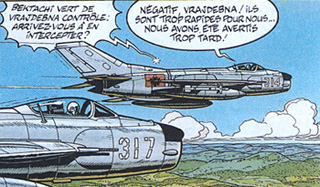 |
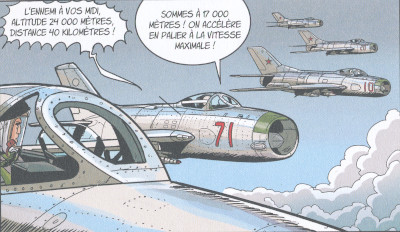 |
Some Russian MIG-19s are shown in the story LE VOL DU RAPIER and MOLOTOK-41 NE REPONDPLUS.
|
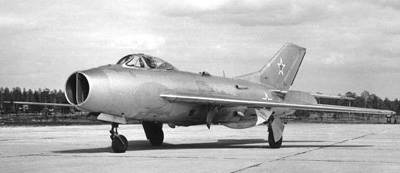 |
The Mikoyan-Gurevich MiG-19 (NATO reporting name "Farmer") is a Soviet second-generation, single-seat, jet-engined fighter aircraft. It was the first Soviet production aircraft capable of supersonic speeds in level flight. A comparable U.S. "Century Series" fighter was the F-100 Super Sabre, although it would oppose the more modern F-4 Phantom and F-105 Thunderchief over Vietnam. It was armed with 3x 30 mm NR-30 cannons (70 rounds per gun for wing guns, 55 rounds for fuselage gun) Up to 250 kg (550 lb) of bombs or unguided rockets on 4 underwing pylons
|
|
Shenyang J-6 (F-6) "Farmer" |
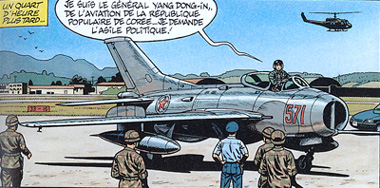 |
A North Korean Shenyang J-6 (The Cinese version of the MIG-19) is well depicted in the story LA NUIT DU SERPENT
|
The Shenyang J-6 (designated F-6 for export versions) (NATO-Codename Farmer) was the Chinese-built copy of the Soviet MiG-19 fighter aircraft. The J-6 has a maximum speed at altitude of 1,540 km/h (960 mph), Mach 1.45. Service ceiling is 17,900 m (58,700 ft). Combat radius with two drop tanks is about 640 km (400 mi). Powerplant is two Liming Wopen-6A (Tumansky R-9) turbojet engines. In addition to the internal cannon armament, most have provision for four wing pylons for up to 250 kg (550 lb) each, with a maximum ordnance load of 500 kg (1,100 lb). Typical stores include unguided bombs, 55 mm rocket pods, or PL-2/PL-5 (Chinese versions of Soviet K-13 (NATO AA-2 Atoll) air-to-air missiles.
|
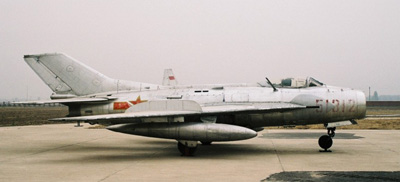 |
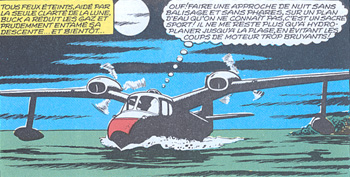 |
A civilian amphibian flying-boat Piaggio P.136-L is used by Buck Danny in the story LES VOLEURS DE SATELLITE. |
The Piaggio P.136-L was an Italian twin-engine amphibian flying-boat, with an all-metal hull, and retractable landing gear.
The prototype first flew in late 1948, and completed certification tests in spring 1949. The Italian air force contracted 14 P.136-Ls for coastal patrol and air/sea rescue. The aircraft was marketed in the United States as the Royal Gull, by Tracker Aircraft Corporation. Tracker received three aircraft ,and components for another 29, but they also built a few on their own, under license.
|
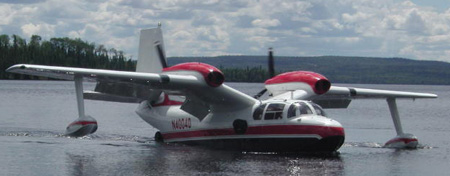 |
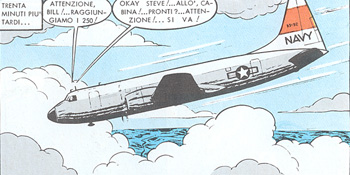 |
An US navy Convair C-131F Samaritan (early designation R4Y-1) is used for the parabolic microgravity test flight in the story X-15 |
The The Convair C-131 Samaritan was an American military transport produced from 1954 to 1956. The CV-240/340/440 series was used by the United States Air Force for medical evacuation and VIP transport and was designated as C-131 Samaritan. The first model Samaritan, the C-131A, was derived from the 240 model, and was delivered to the USAF in 1954. The United States Navy used the Samaritan as the R4Y. Nearly all of the C-131s left the active inventory in the late 1970s, but Air National Guard and Navy units operated a few until 1990.
|
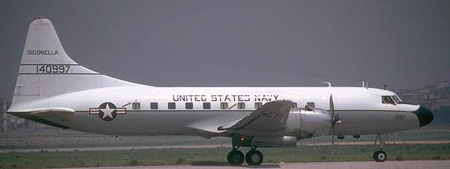 |
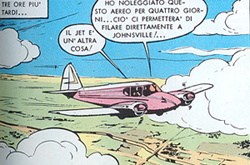 |
In the story X-15 Buck Danny and his friends are flying a Piper PA-23 Apache later named as Aztec |
A Piper PA-23 Aztec is show by Bergese at the beginning of the story TONNERRE SUR LA CORDILLERE |
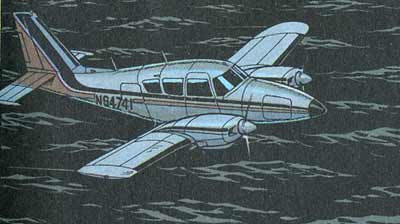 |
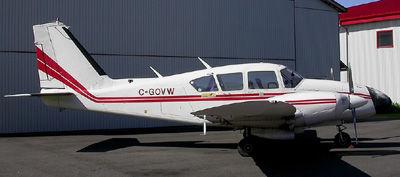 |
The Piper PA-23, named Apache and later Aztec, was an American twin-engined monoplane, the first twin-engine aircraft built by Piper Aircraft.
Originally to be named the "Twin-Stinson" and designed as a four-seater low-wing all-metal monoplane with a twin tail, the prototype first flew 2 March 1952.
The US Navy acquired 20 Aztecs, designating them UO-1, which changed to U-11A when unified designations were adopted in 1962.
|
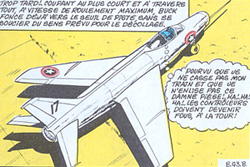 |
The research prototype interceptor Mikoyan-Gourevitch Ye-50, which was one of the early swept wing version of the later MIG-21, is well depicted in the story ALERTE A CAP KENNEDY |
A Ye-50 prototype is probably also shown in the classical Buck Danny adventure #6 ALERTE ROUGE.
|
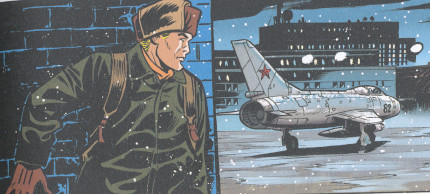 |
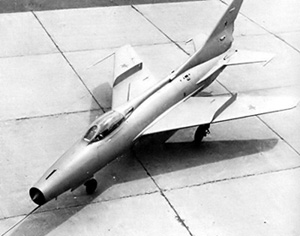 |
The first prototype of the future MIG-21 designated Ye-2 with swept wings, flew for the first time on 14 February 1955. The second version of preproduction prototypes was the Ye-50, powered by the AM-9Ye jet engine and a Dutchkin S-155 liquid fueled rocket engine, first flight on 9 January 1956. Ye-50/2 reach an Altitude of 25600 m (83989.5 ft) and a speed of 1460 km/h (907.2 mph).
Soon, it became clear that the swept wing design would not offer the performance needed to reach Mach 2 under operational conditions (speed w/o the rocket engine were considerable slower).
|
|
Max Holste MH.1521 Broussard |
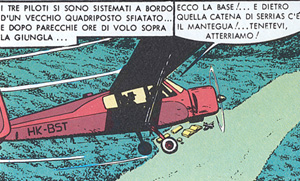 |
In the story ALERTE ATOMIQUE an observation aircraft Max Holste MH.1521 Broussard is shown. |
The Max Holste MH.1521 Broussard is a 1950s French six-seat utility monoplane designed by Max Holste to meet a French Army requirement.
The MH.1521 Broussard was designed to meet a requirement for a lightweight liaison and observation aircraft. It is braced high-wing monoplane with twin vertical tail surfaces. It has a fixed tailwheel landing gear and is powered by a nose-mounted Pratt & Whitney R-985 radial piston engine.
|
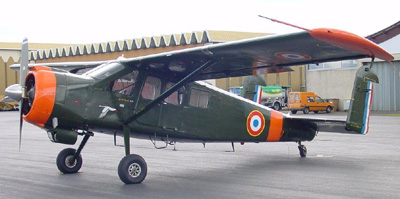 |
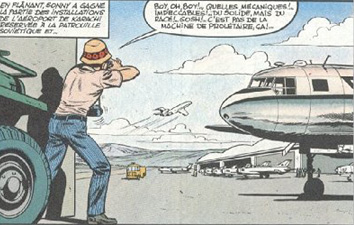 |
In the story LE PILOTE AU MASQUE DE CUIR a Russian transport aircraft Ilyushin Il-14 is shown. |
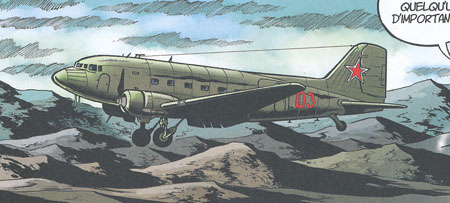 |
In the story DUEL SUR MIG ALLEY a Russian transport aircraft Ilyushin Il-14 is also shown. |
The Ilyushin Il-14 (NATO reporting name "Crate") was a Soviet twin-engine commercial and military personnel and cargo transport aircraft that first flew in 1950, and entered service in 1954. Il-14 was also manufactured in East Germany by VVB Flugzeugbau, in Czechoslovakia as the Avia 14, and in China under the Chinese designation Y-6[citation needed]. The Ilyushin Il-14 was typically replaced by the Antonov An-24 and Yakovlev Yak-40.
|
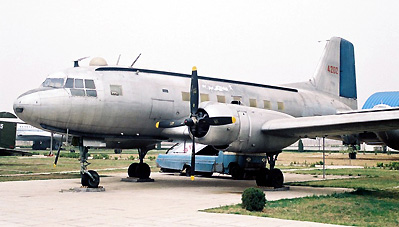 |
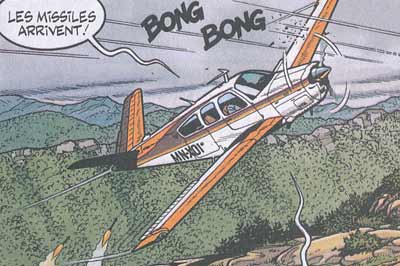 |
A Beechcraft 35 Bonanza is well represented by Bergese in the story ZONE INTERDITE |
The Beechcraft Bonanza is an American general aviation aircraft introduced in 1947 by Beech Aircraft Corporation of Wichita, Kansas. The six-seater, single-engine aircraft is still being produced by Beechcraft and has been in continuous production longer than any other airplane in history. More than 17,000 Bonanzas of all variants have been built, produced in both distinctive V-tail as well as conventional tail configurations |
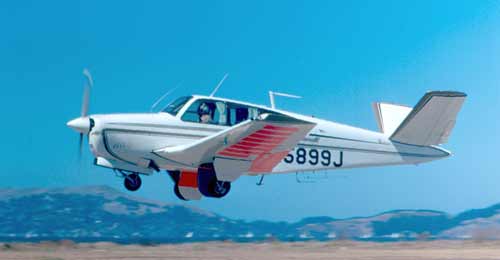 |
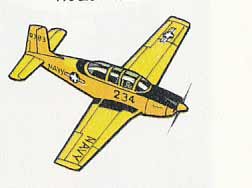 |
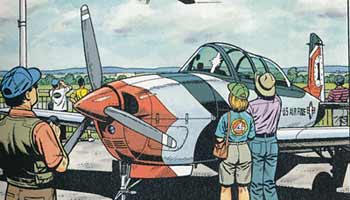 |
Two Beechcraft T-34 Mentor are represented by Bergese in the story SABOTAGE AU TEXAS |
The Beechcraft T-34 Mentor is an American propeller-driven, single-engined, military trainer aircraft derived from the Beechcraft Model 35 Bonanza. The earlier versions of the T-34, dating from around the late 1940s to the 1950s, were piston-engined. These were eventually succeeded by the upgraded T-34C Turbo-Mentor, powered by a turboprop engine. The T-34 remains in service more than six decades after it was first designed. |
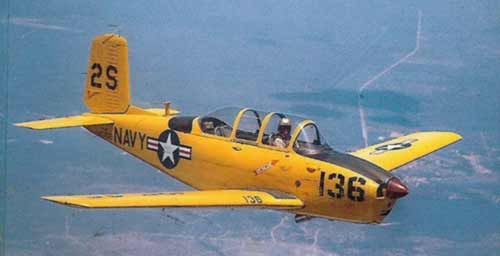 |
 |
The Russian experimental prototype Tsybin RSR Strategic Reconnaissance Aircraft is represented by Arroyo in the Buck Danny Classic Adventure #5 and #6 titled OPÉRATION RIDEAU DE FER and ALERTE ROUGE |
The Tsybin RSR (Reactivnyi Strategicheskii Razvedchik) was a Soviet design for an advanced, long-range, Mach 3 strategic reconnaissance aircraft. In 1954, the design bureau headed by Pavel Tsybin started development of a ramjet-powered supersonic strategic bomber, the RS. This design proved impracticable, and a smaller derivative, the 2RS was proposed, which would achieve intercontinental range by being air-launched from a modified Tupolev Tu-95 bomber.
The RSR was primarily of aluminium construction, with a long circular-section fuselage, which housed a pressurized cabin for the pilot together with cameras and fuel, with thin, low-aspect-ratio trapezoidal wings. The engines, two Soloviev D-21 turbofans, were mounted at the tips of the wings. The aircraft had a bicycle undercarriage, with outriggers under the engine nacelles. It was planned to cruise at greater than Mach 2 at a height of 20,000 m (65,600 ft) giving a range of 3,760 km (2,340 mi).
| 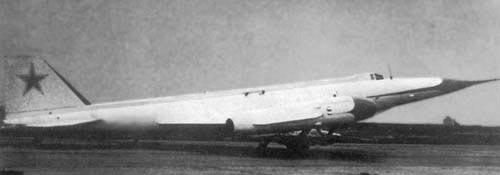 |
A simplified, full-sized aerodynamic prototype for the novel layout, the NM-1 was built in 1957. Intended for low-speed handling tests, the NM-1 had a steel-tube fuselage with duraluminium and plywood skinning. This aircraft, powered by two Mikulin AM-5 turbojets first flew on 7 April 1959.[3] Based on the results of these trials, the RSR was redesigned (as the R-020) to make it more manoeuvrable at high altitude (it was proposed to carry out barrel rolls to avoid surface-to-air missiles). More conventional Tumansky R-11 turbojets (the engine used in the MiG-21) replaced the unavailable Soloviev turbofans. Five R-020 airframes were virtually complete, only awaiting engines by April 1961, with another 10 planned, when Soviet Premier Nikita Khrushchev cancelled the program. |
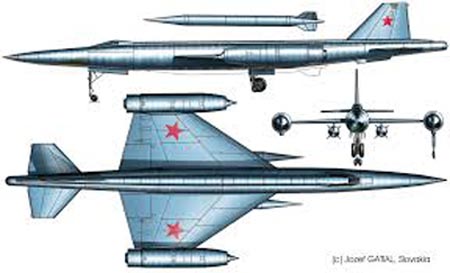 |
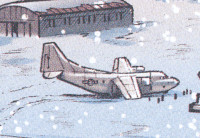 |
A C-123 Provider is represented by Arroyo in the Buck Danny classic #5 OPERATION RIDEAU DE FER |
The Fairchild C-123 Provider is an American military transport aircraft designed by Chase Aircraft and subsequently built by Fairchild Aircraft for the United States Air Force. In addition to its USAF service, which included later service with the Air Force Reserve and Air National Guard, it also went on to serve most notably with the United States Coast Guard and various air forces in South East Asia. During the Vietnam War, the aircraft was used to spray Agent Orange.
|
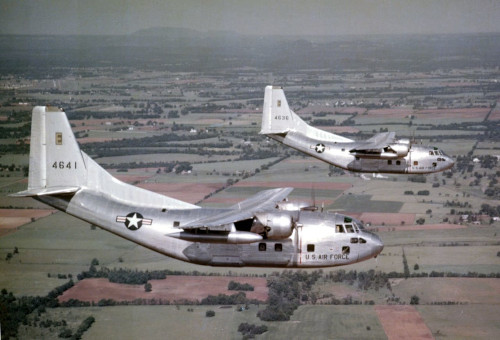 |
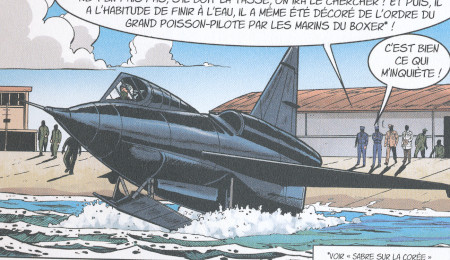 |
The first prototype of the Sea Jet Plane XF2Y-1 Sea Dart is the main aircraft of the Buck Danny classic #7 SEA DART |
The Convair F2Y Sea Dart was an American seaplane fighter aircraft that rode on twin hydro-skis during takeoff and landing. It flew only as a prototype, and never entered mass production. It is the only seaplane to have exceeded the speed of sound.
It was created in the 1950s, to overcome the problems with supersonic planes taking off and landing on aircraft carriers. The program was canceled after a series of unsatisfactory results and a tragic accident on 4 November 1954, in which test pilot Charles E. Richbourg was killed when the Sea Dart he was piloting disintegrated in midair. The four surviving planes were retired in 1957, but some were kept in reserve until 1962.
The aircraft was to be a delta-winged fighter with a watertight hull and twin retractable hydro-skis for takeoff and landing. When stationary or moving slowly in the water, the Sea Dart floated with the trailing edge of the wings touching the water. The skis were not extended until the aircraft reached about 10 miles (16 km) per hour during its takeoff run.
In the 1950s, the US Navy considered the internal arrangements of a submarine aircraft carrier that could carry three of these aircraft. Stored in pressure chambers that would not protrude from the hull, they would be raised by a portside elevator just aft of the sail and set to take off on their own on a smooth sea but catapulted aft in a higher sea. The program only reached the "writing on a napkin" stage, for two problems were not addressed: the hole for the elevator would have seriously weakened the hull and the load of a laden elevator would also be difficult to transmit to the hull structure.
|
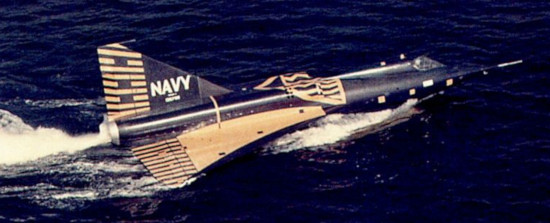 |
 |
|
North American XF-108 Rapier |
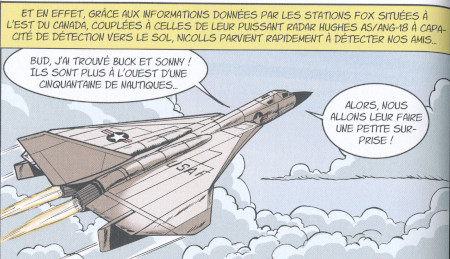 |
The XF-108 Rapier is represented by Le Bras in the Buck Danny classic #9 and #10 adventures titled LE VOL DU RAPIER and MOLOTOK-41 NE REPOND PLUS.
In this adventures the Rapier is show as being in operative status while in the reality only few moch-up have been produced being the program cancelled at the end of the 50s. |
The North American XF-108 Rapier was a proposed long-range, high-speed interceptor aircraft designed by North American Aviation intended to defend the United States from supersonic Soviet strategic bombers. The aircraft would have cruised at speeds around Mach 3 (3,200 km/h; 2,000 mph) with an unrefueled combat radius over 1,000 nautical miles (1,900 km; 1,200 mi), and was equipped with radar and missiles offering engagement ranges up to 100 miles (160 km) against bomber-sized targets.
To limit development costs, the program shared engine development with the North American XB-70 Valkyrie strategic bomber program, and used a number of elements of earlier interceptor projects. The program had progressed only as far as the construction of a single wooden mockup when it was cancelled in 1959, due to a shortage of funds and the Soviets' adoption of ballistic missiles as their primary means of nuclear attack. Had it flown, the F-108 would have been the heaviest fighter of its era.
|
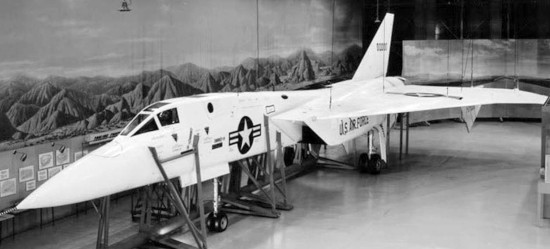 |
|
Mikoyan-Gurevich MiG-17 "Fresco" |
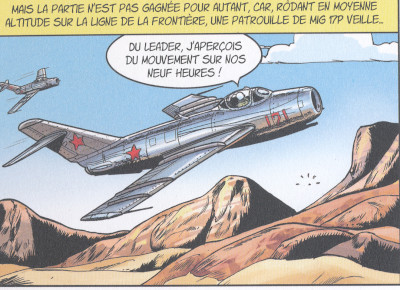 |
Some Russian MIG-17P are represented in the story MOLOTOK-41 NE REPOND PLUS. |
The Mikoyan-Gurevich MiG-17 (NATO reporting name:Fresco) is a high-subsonic fighter aircraft produced in the Soviet Union from 1952 and was operated by air forces internationally. The MiG-17 was license-built in China as the Shenyang J-5 and Poland as the PZL-Mielec Lim-6. The MiG-17 is still being used by the North Korean air force in the present day and has seen combat in the Middle East and Asia.
|
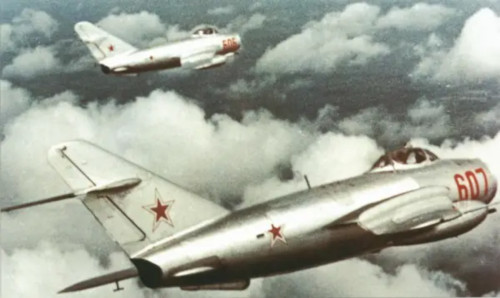 |
| |